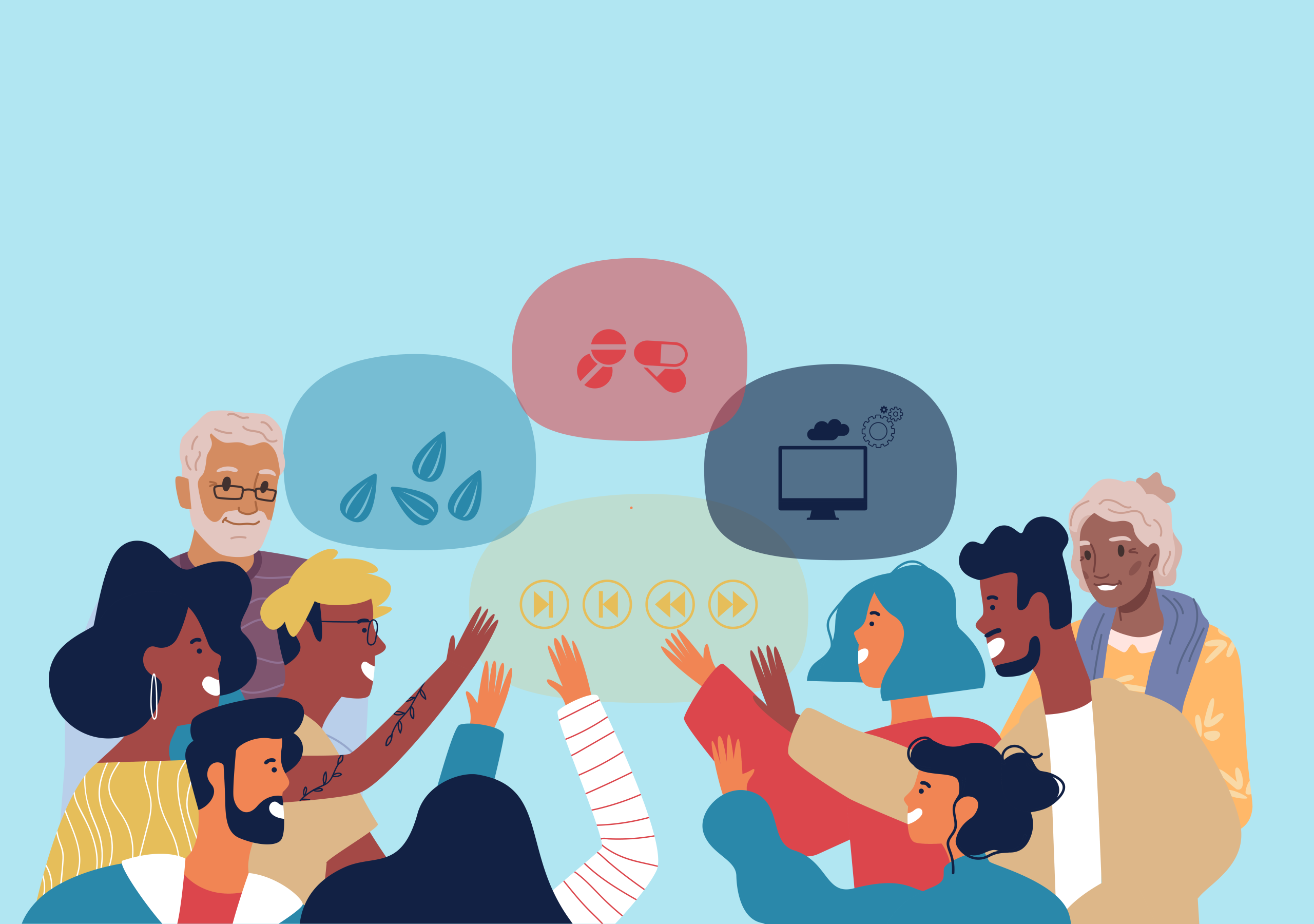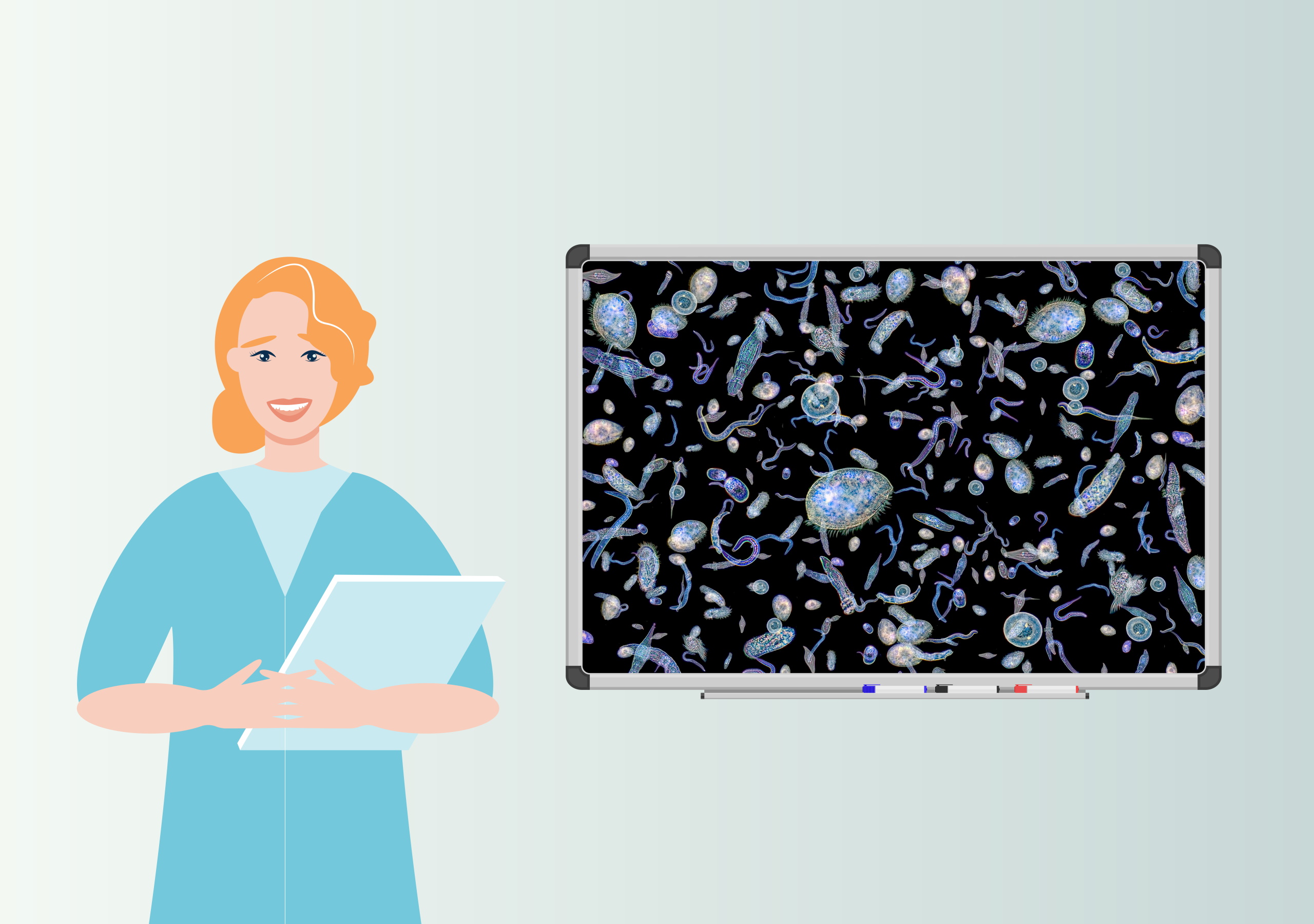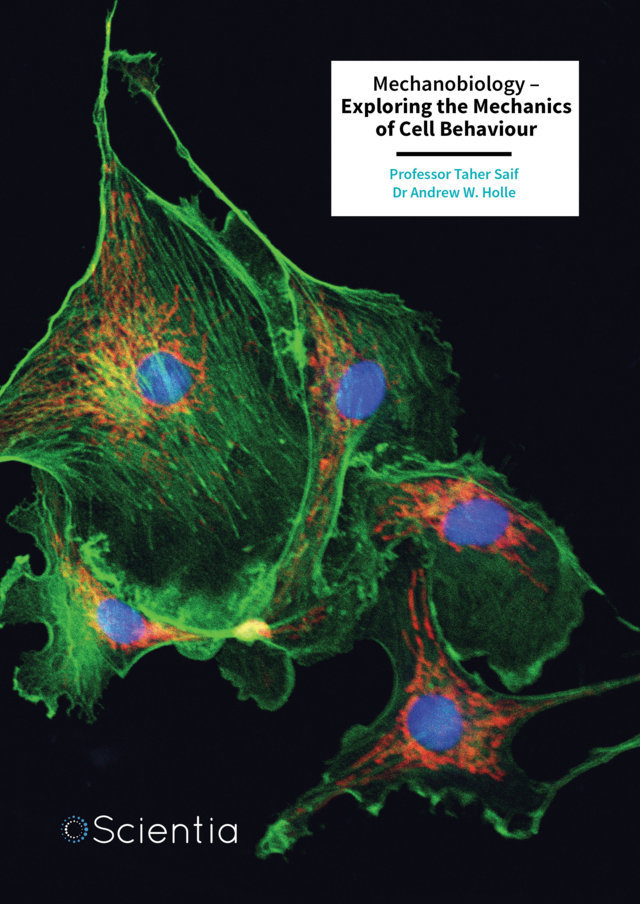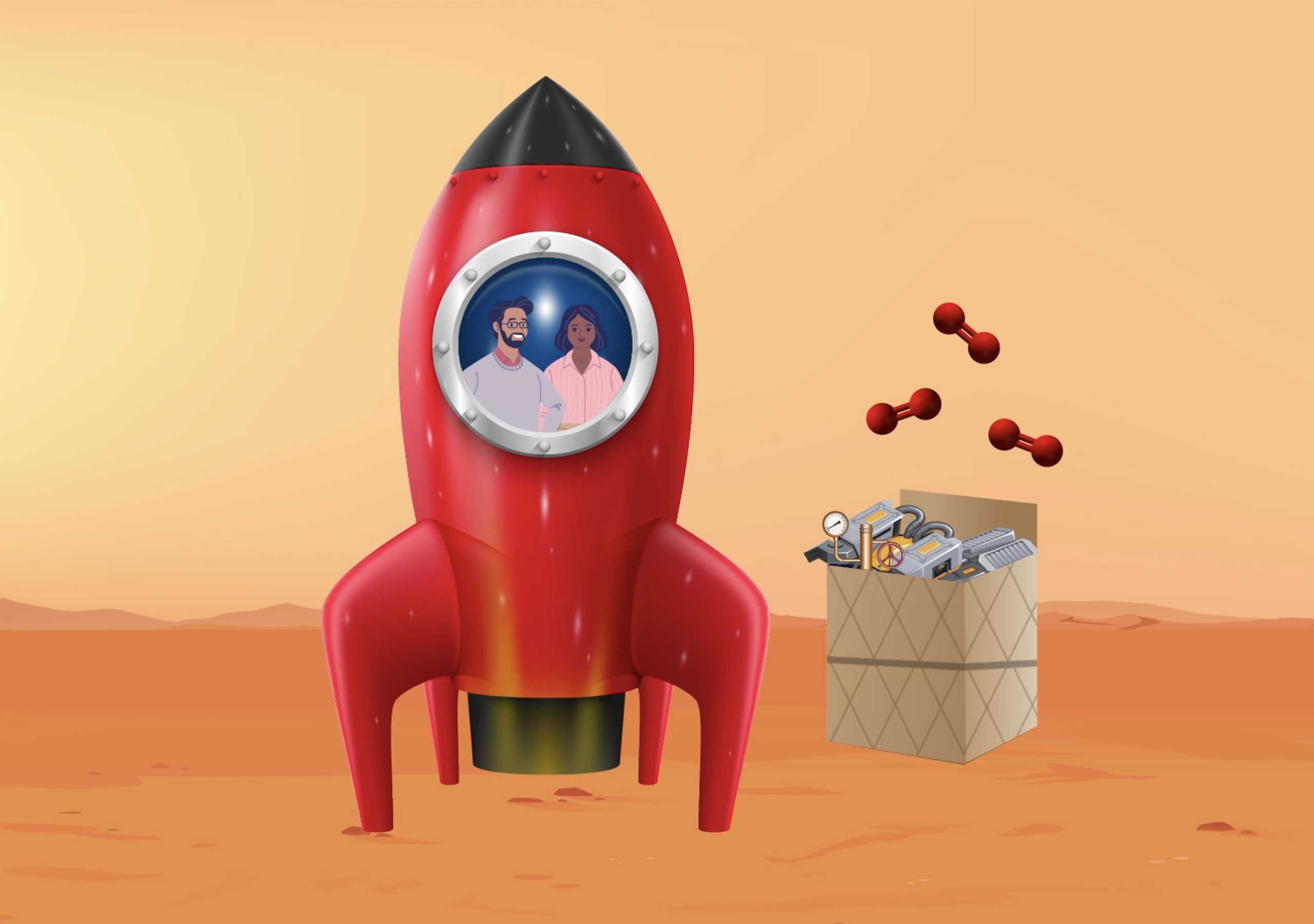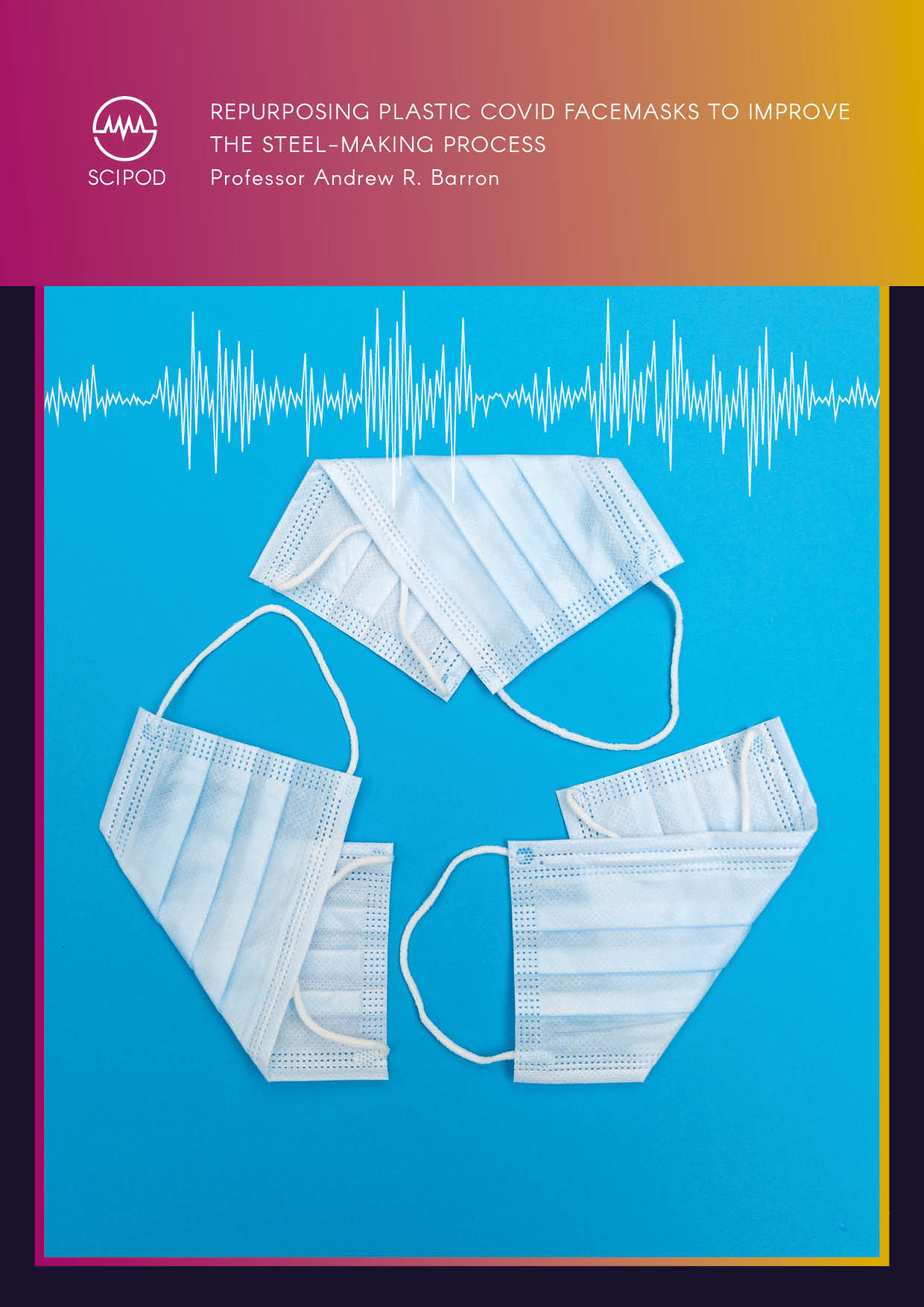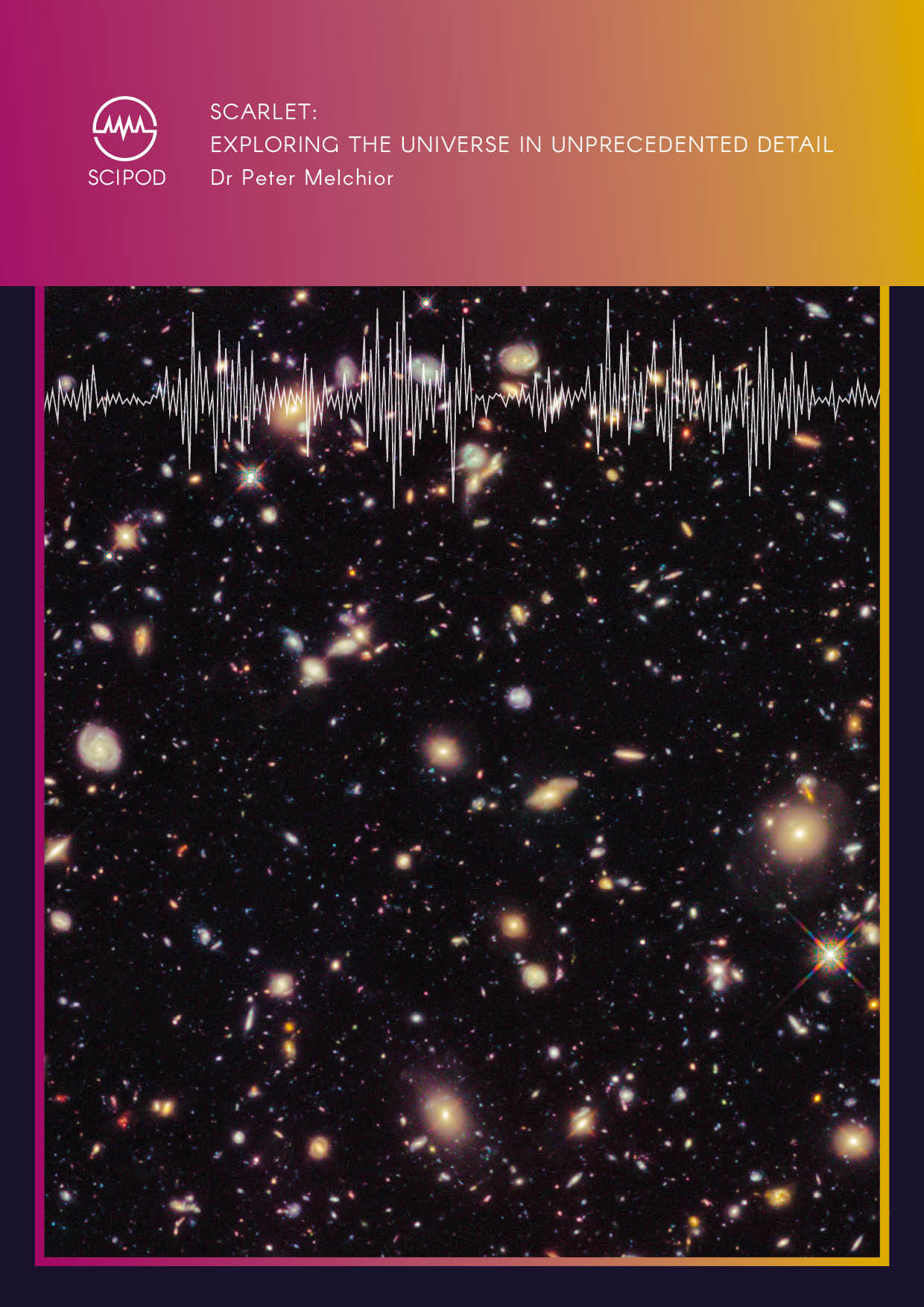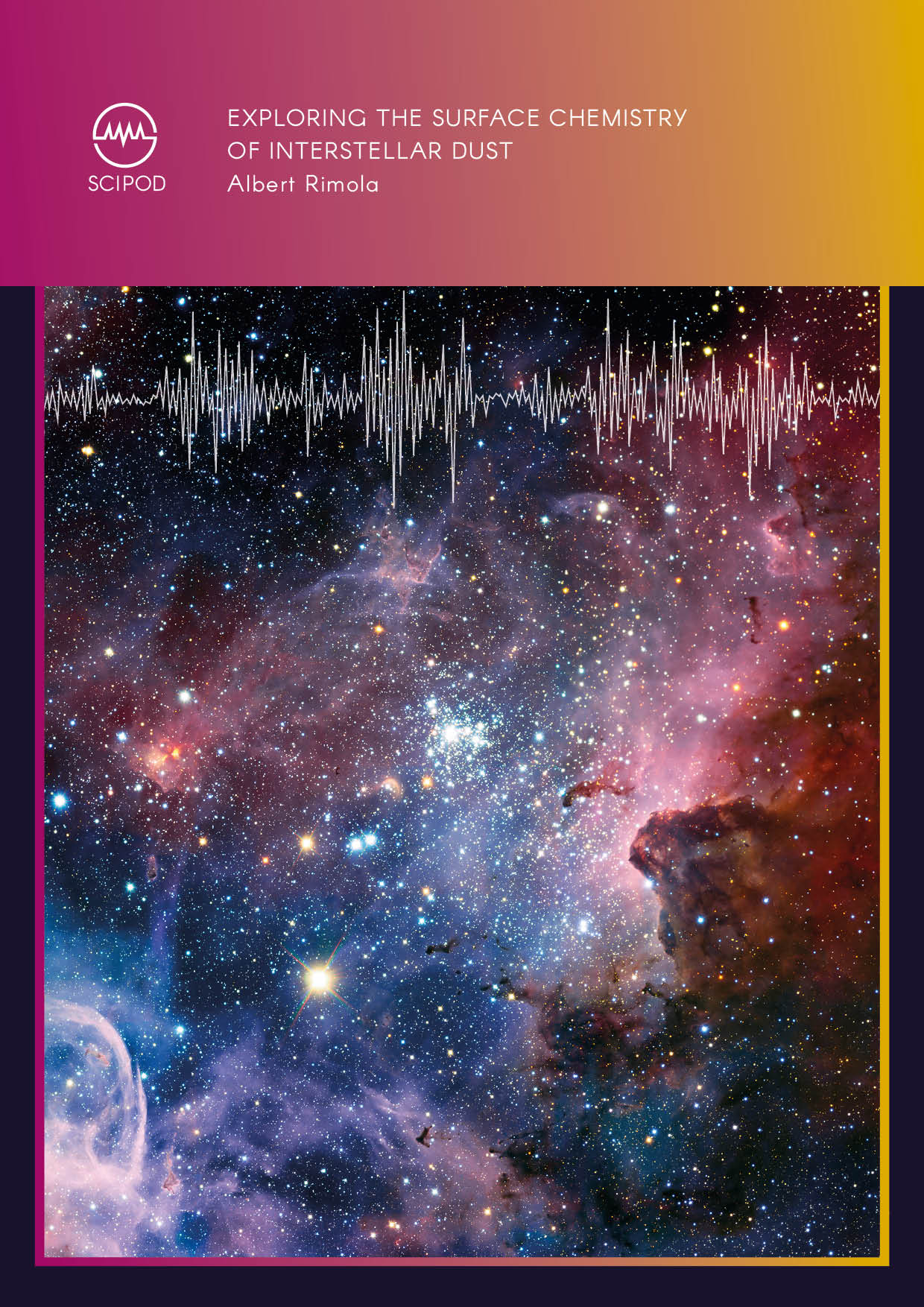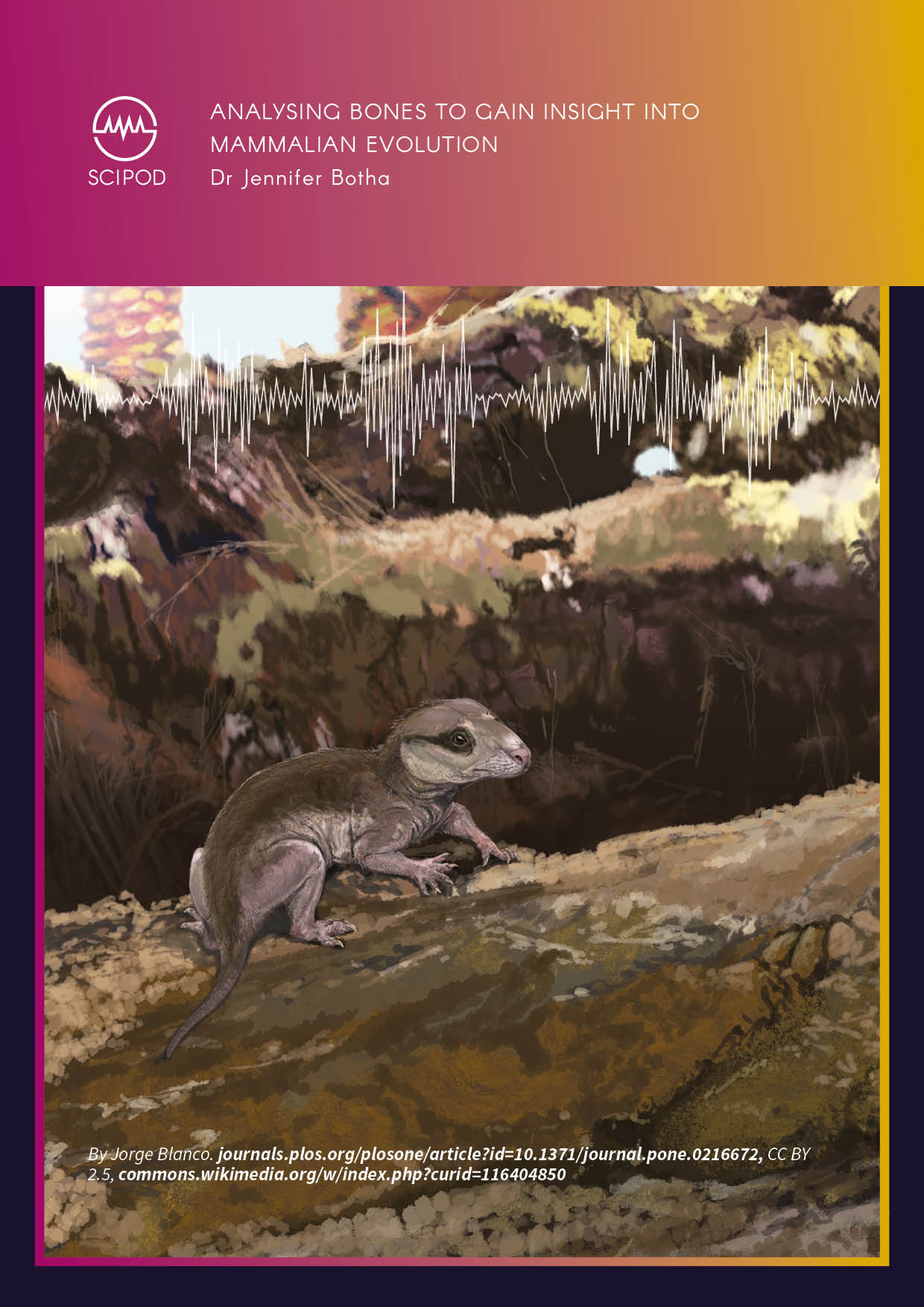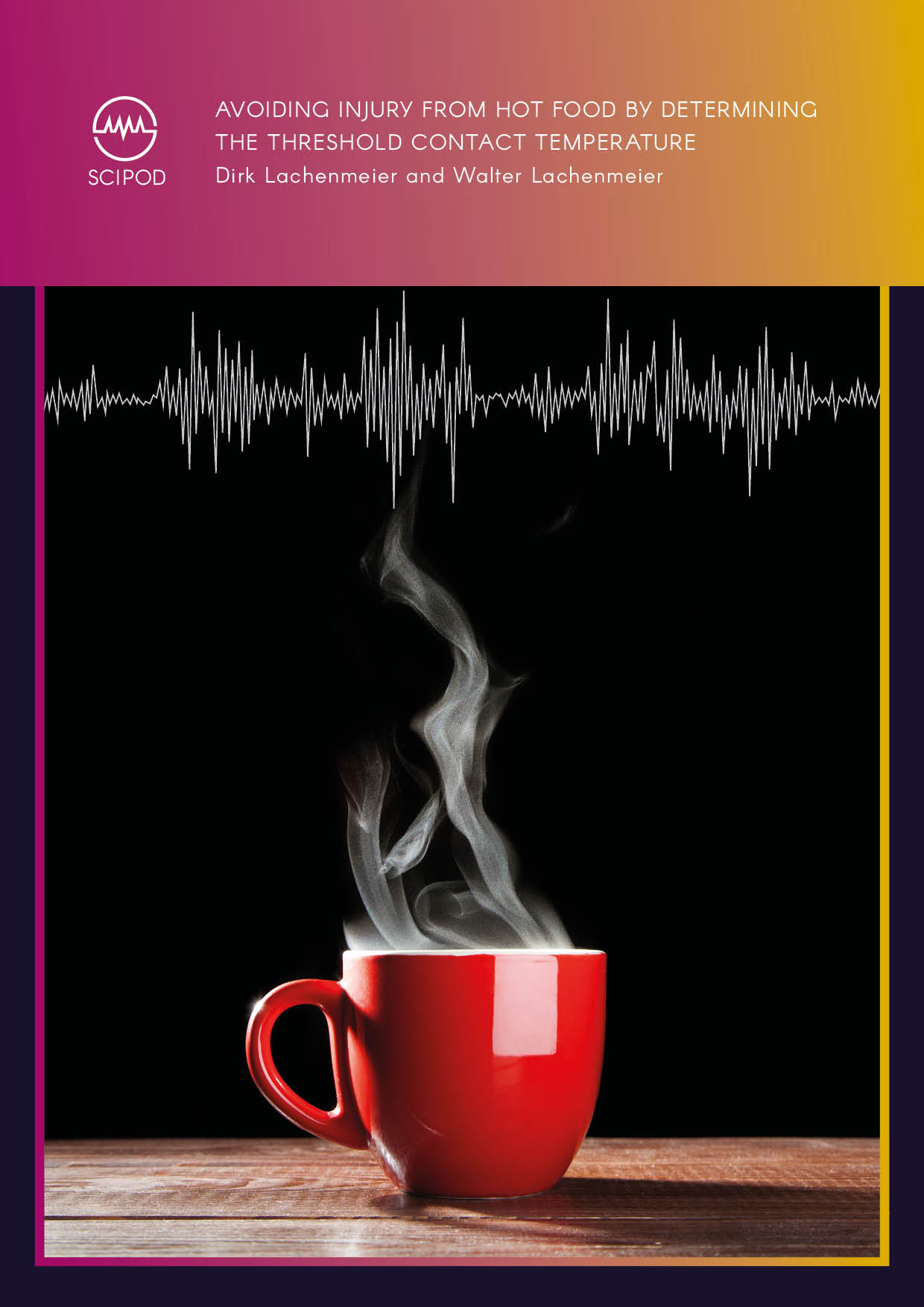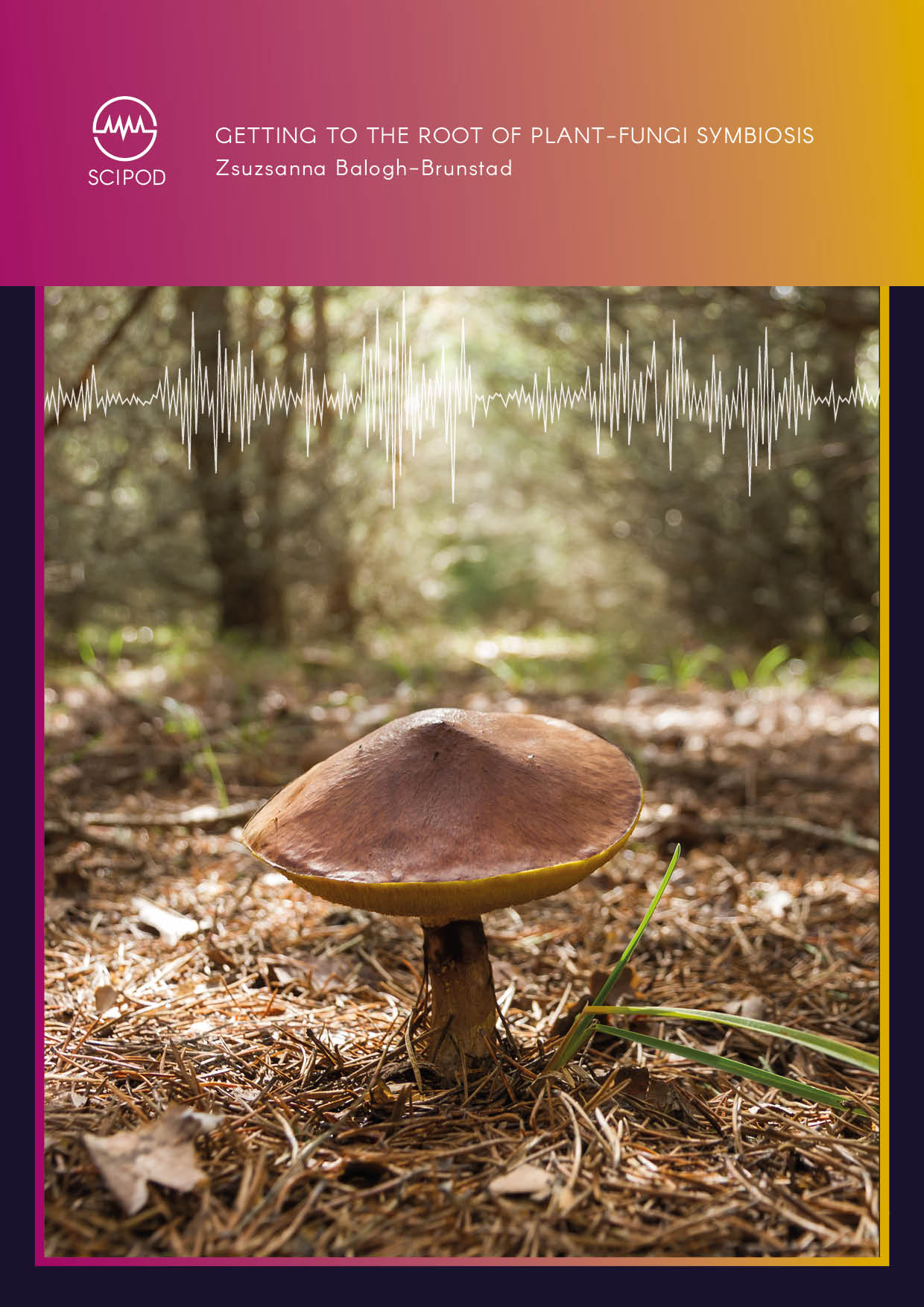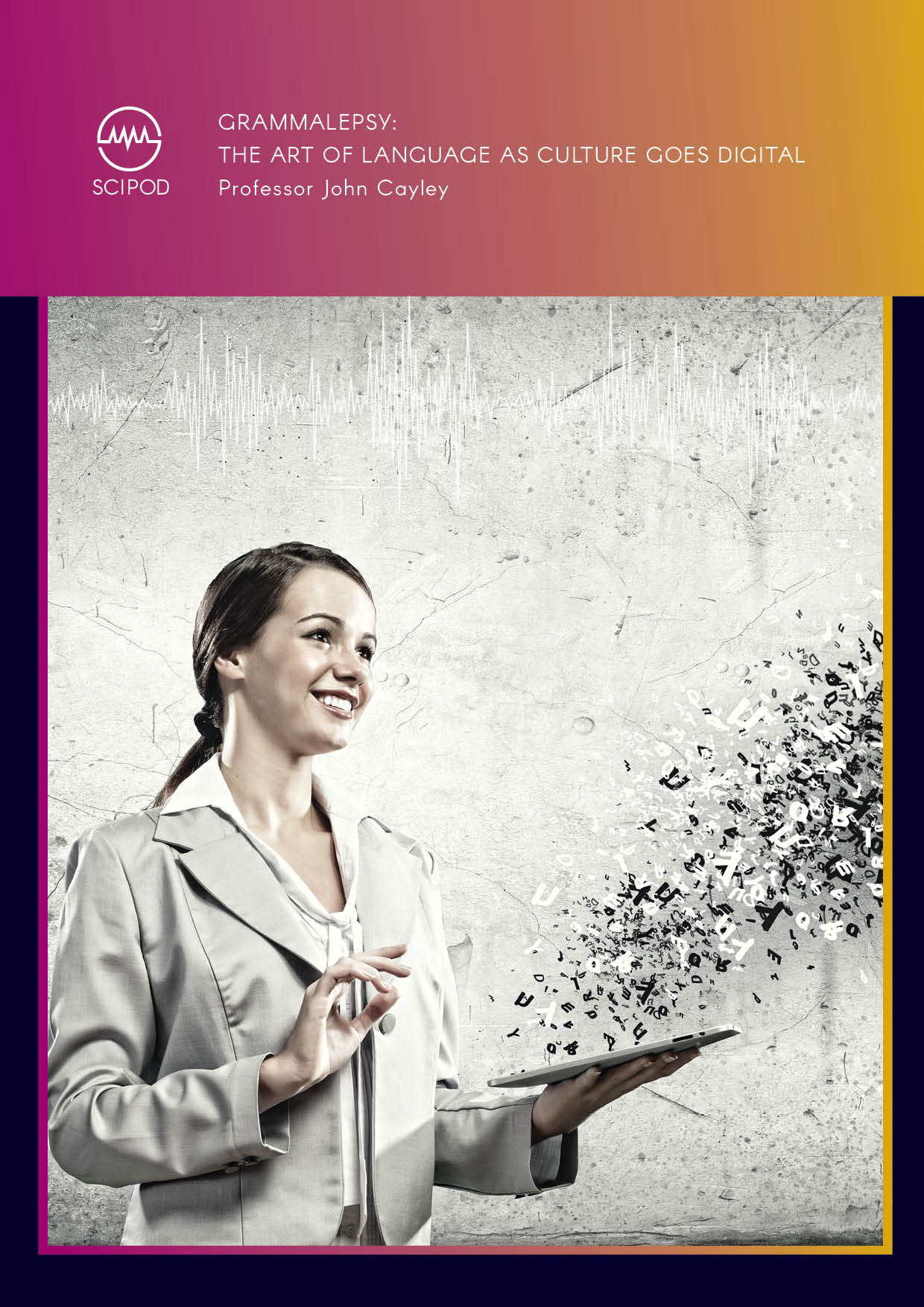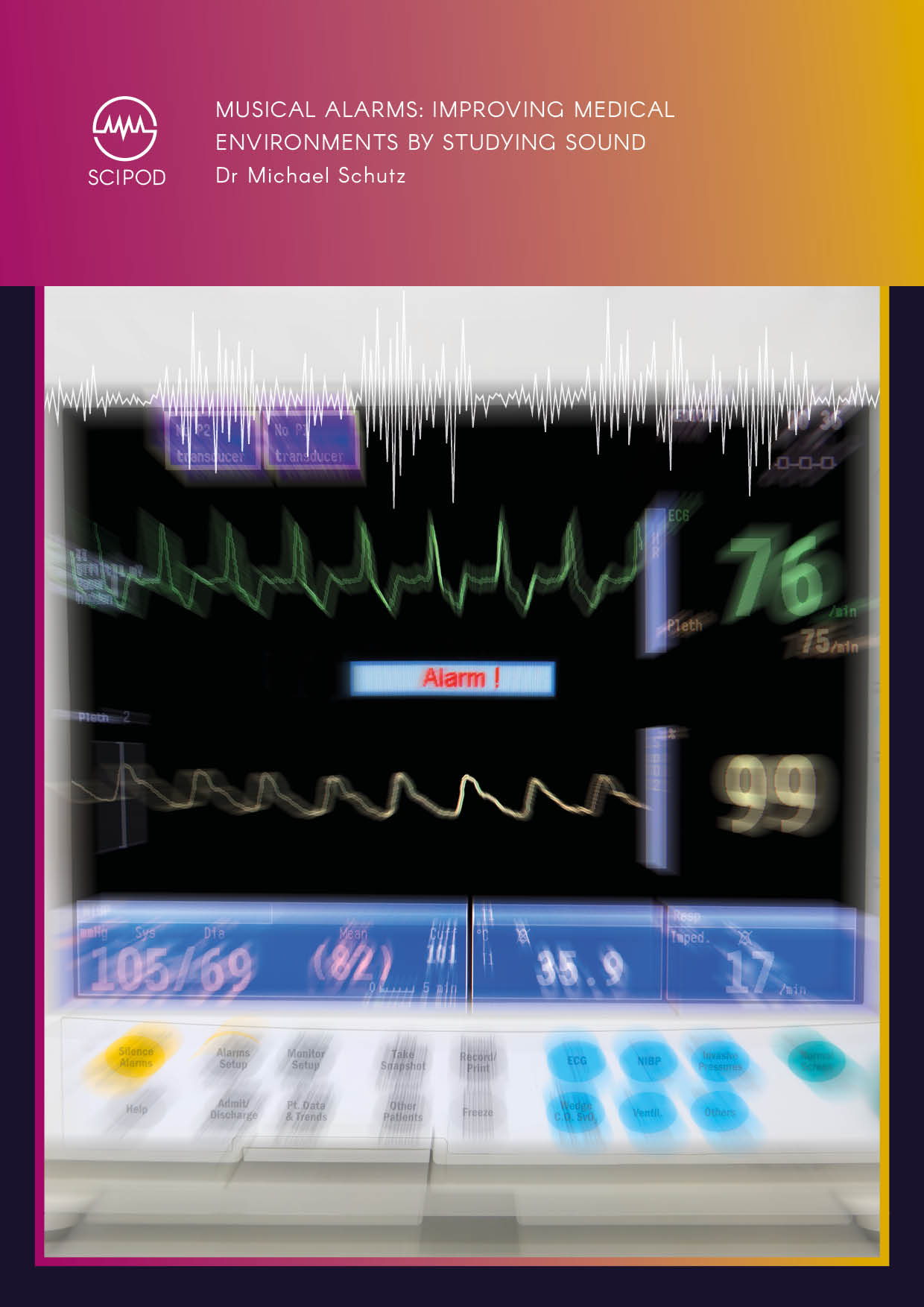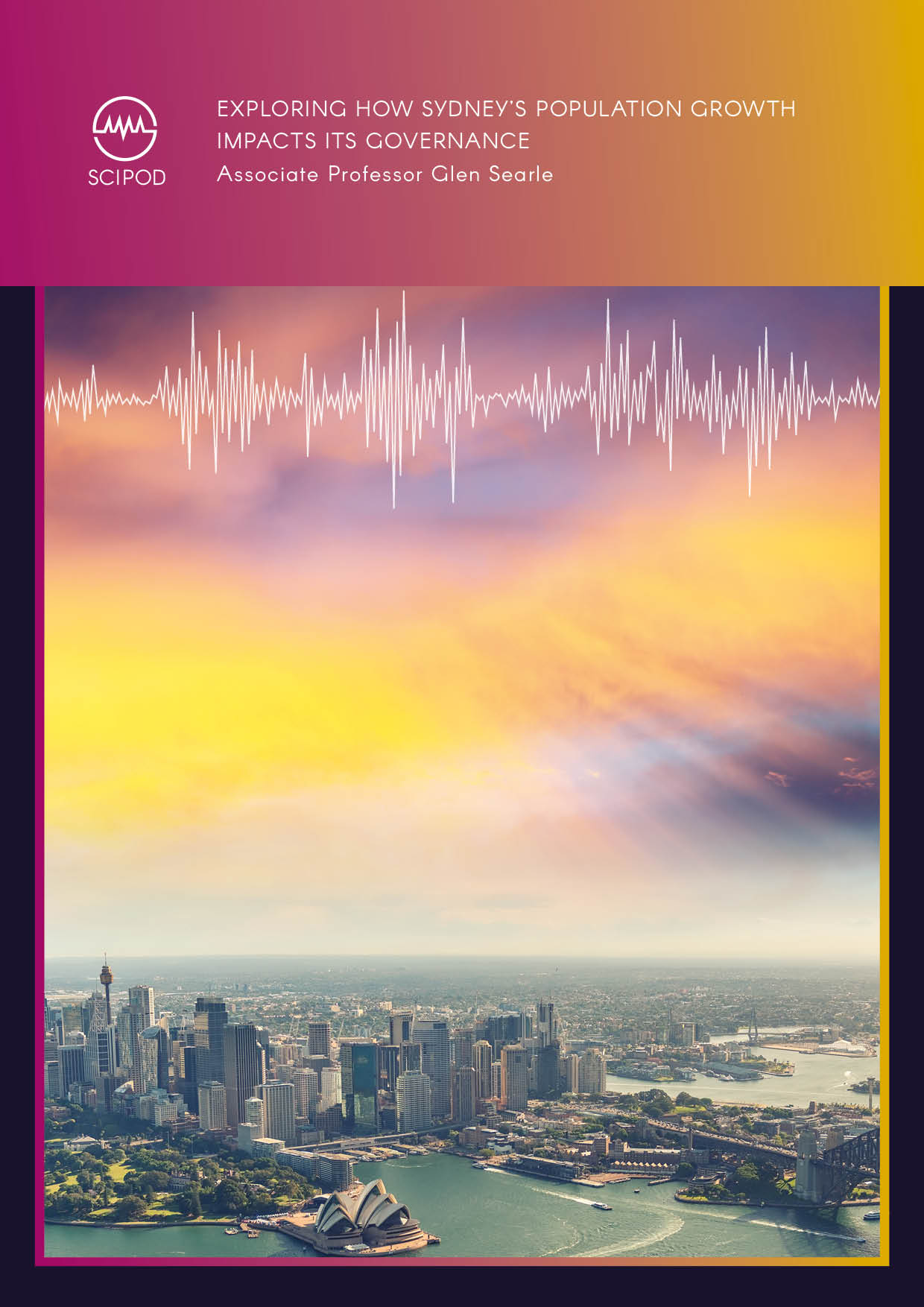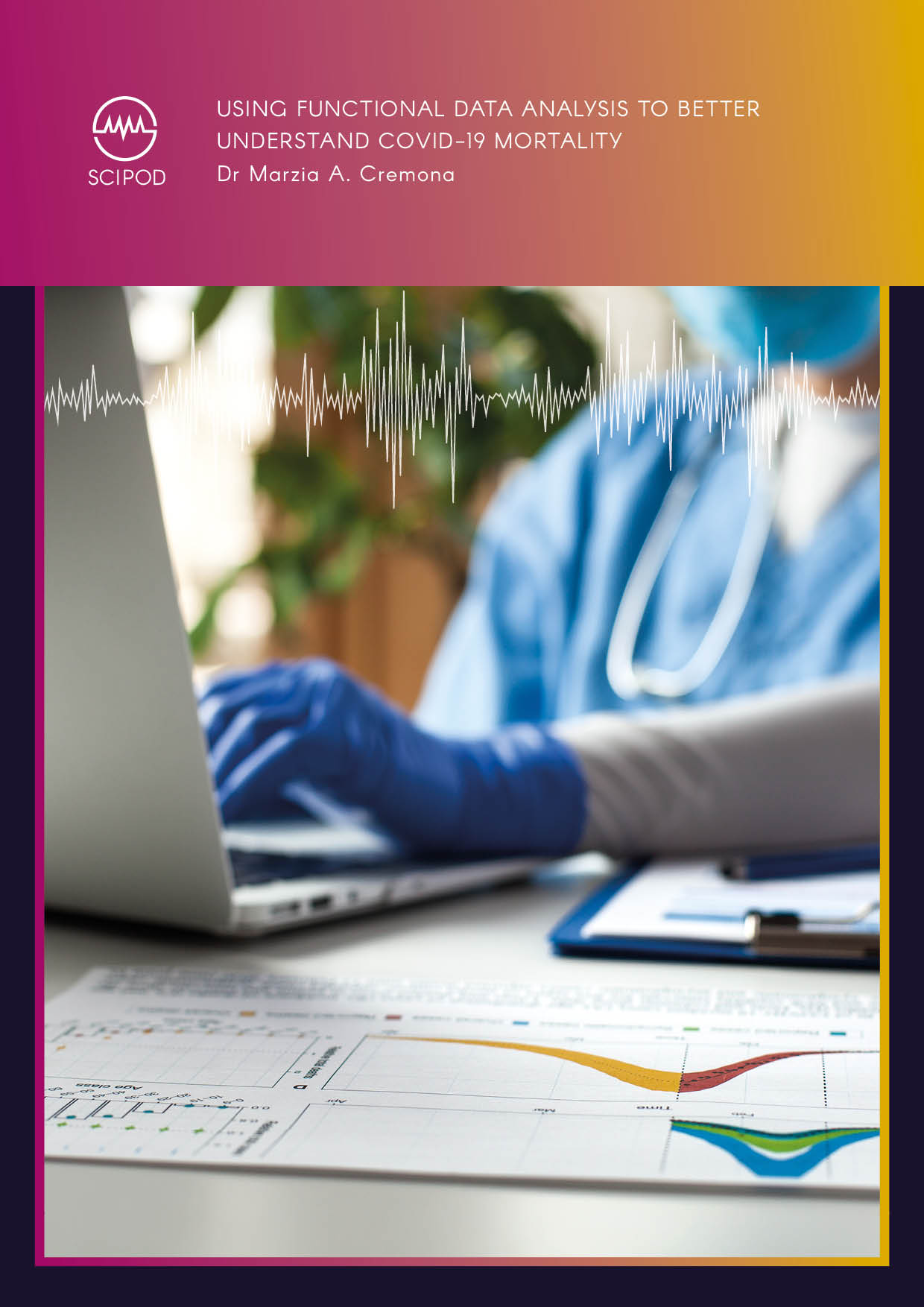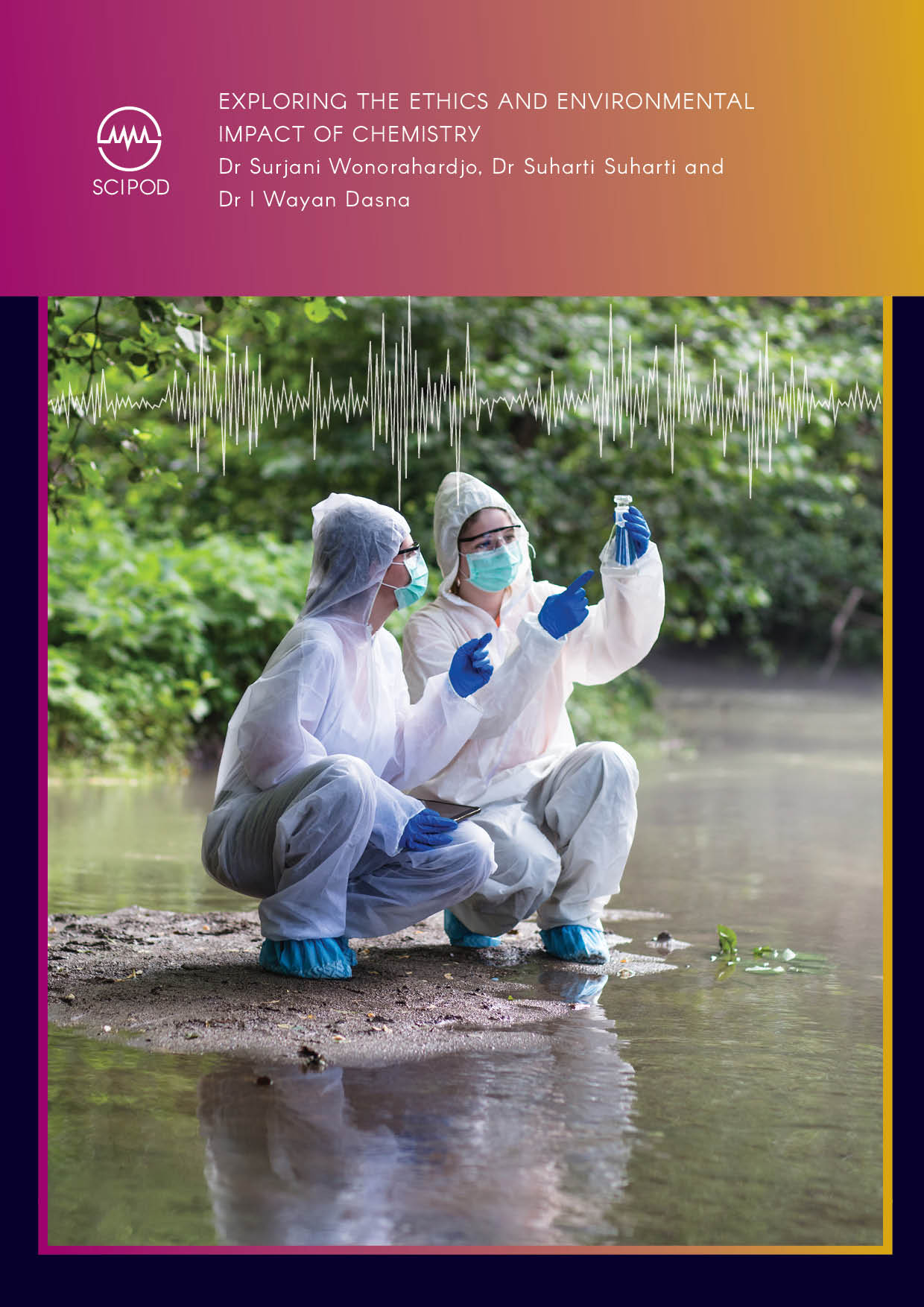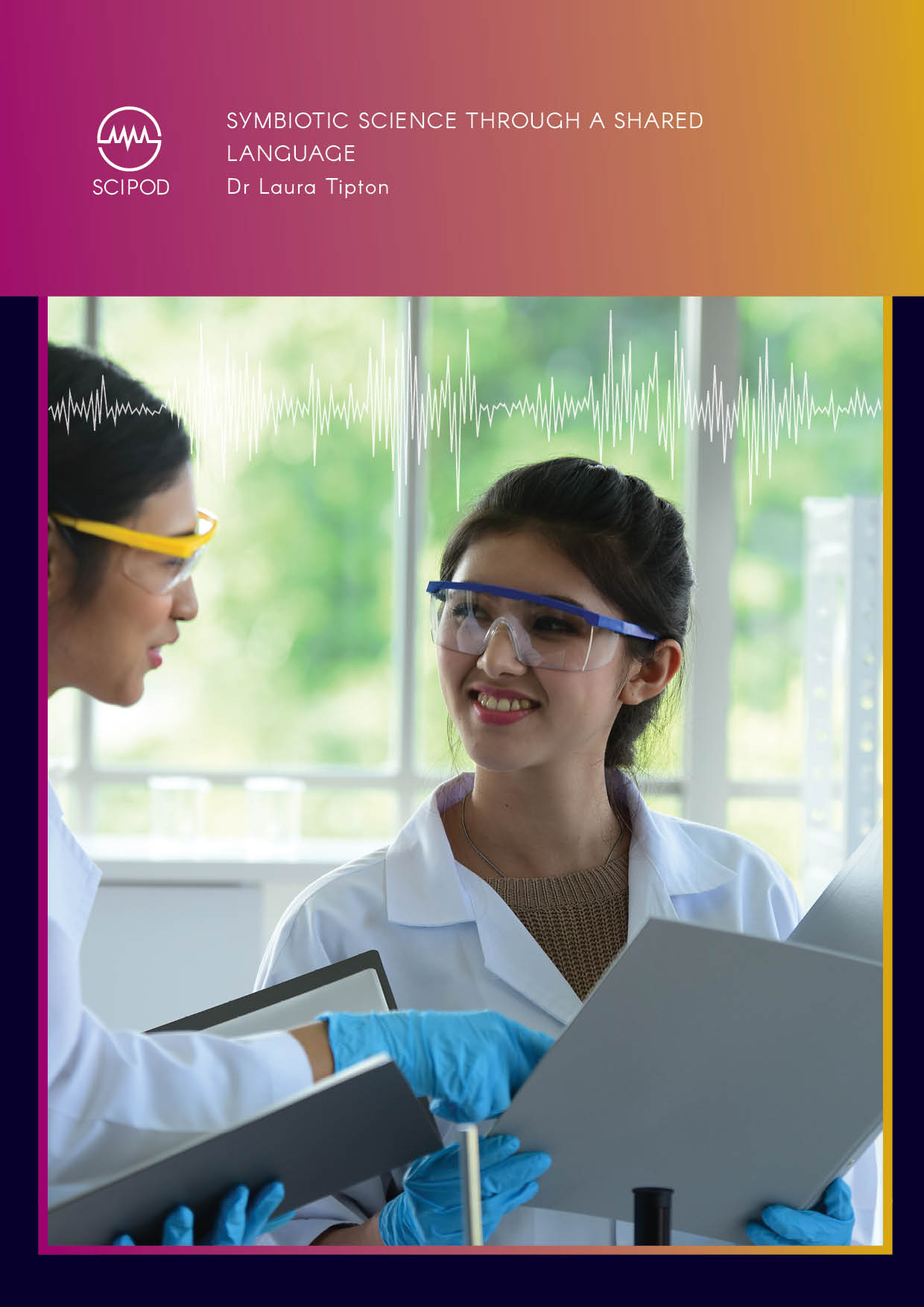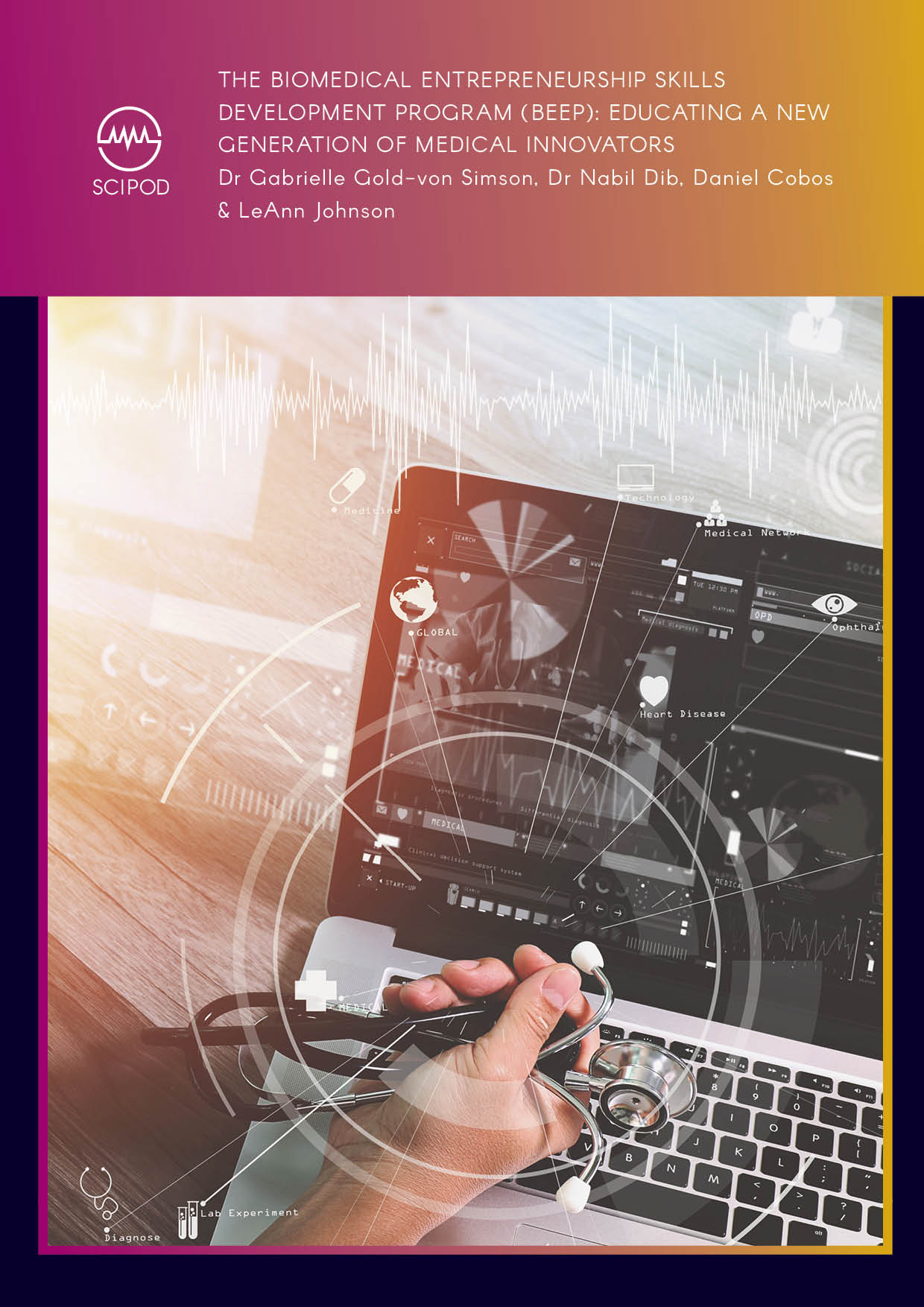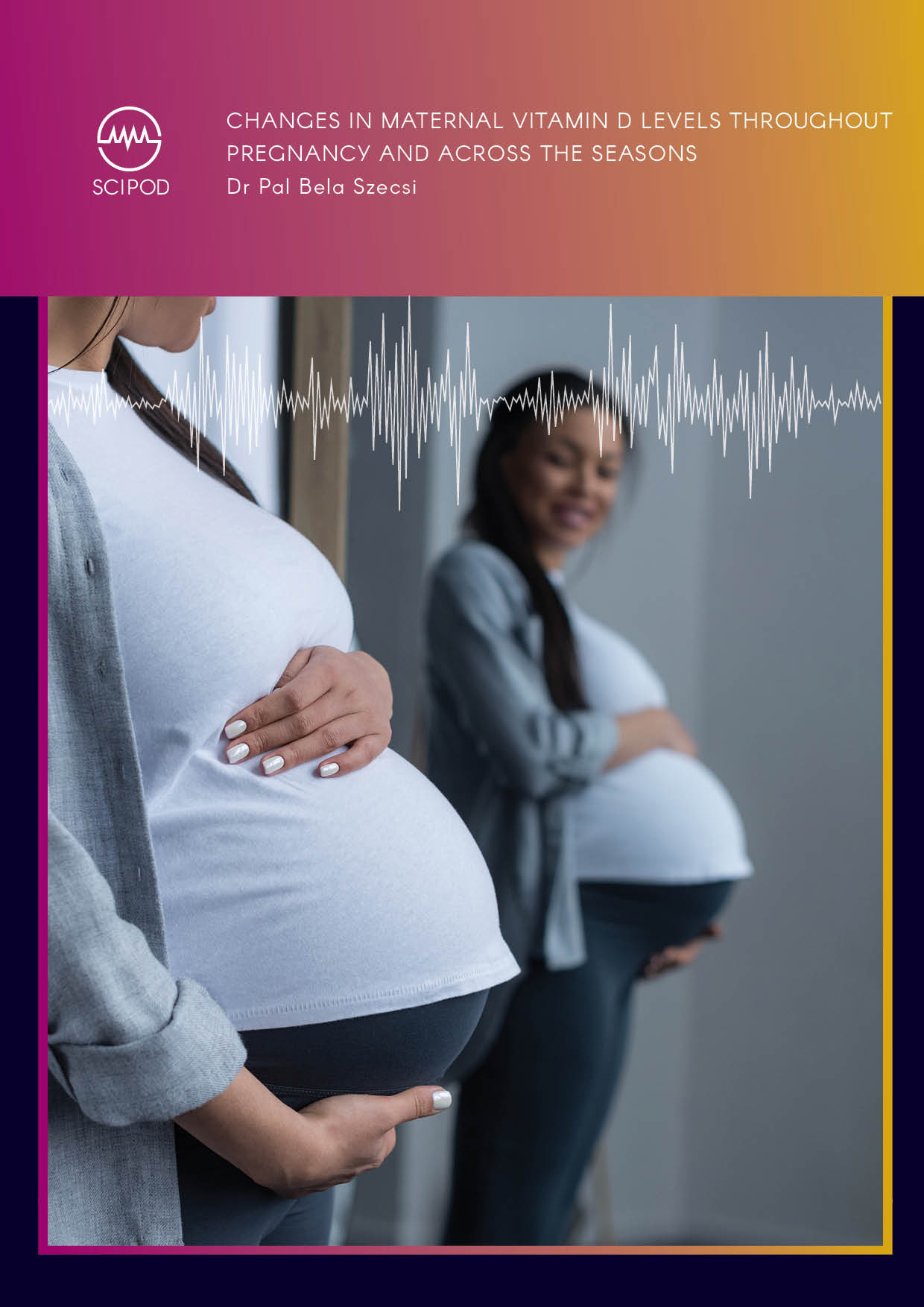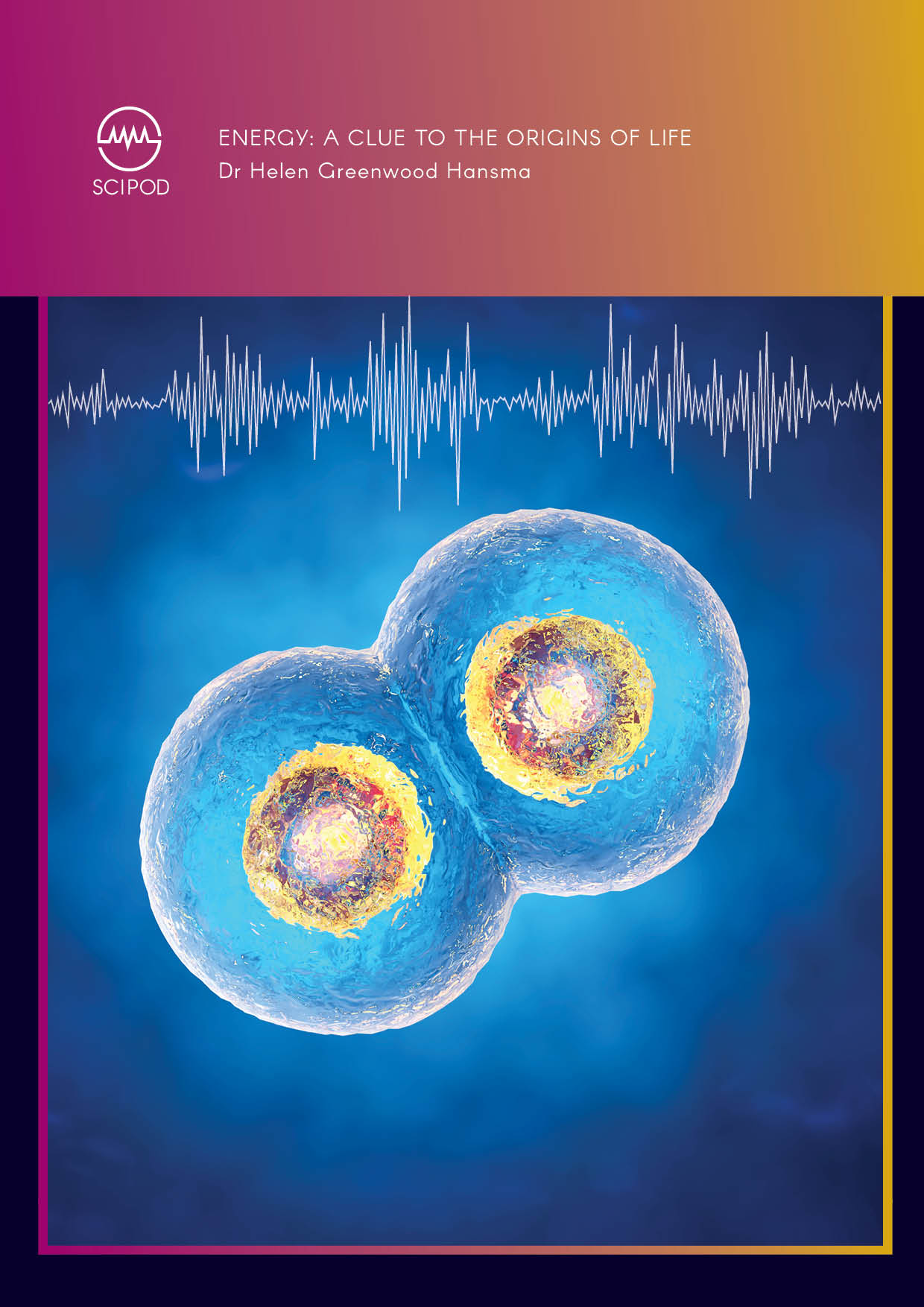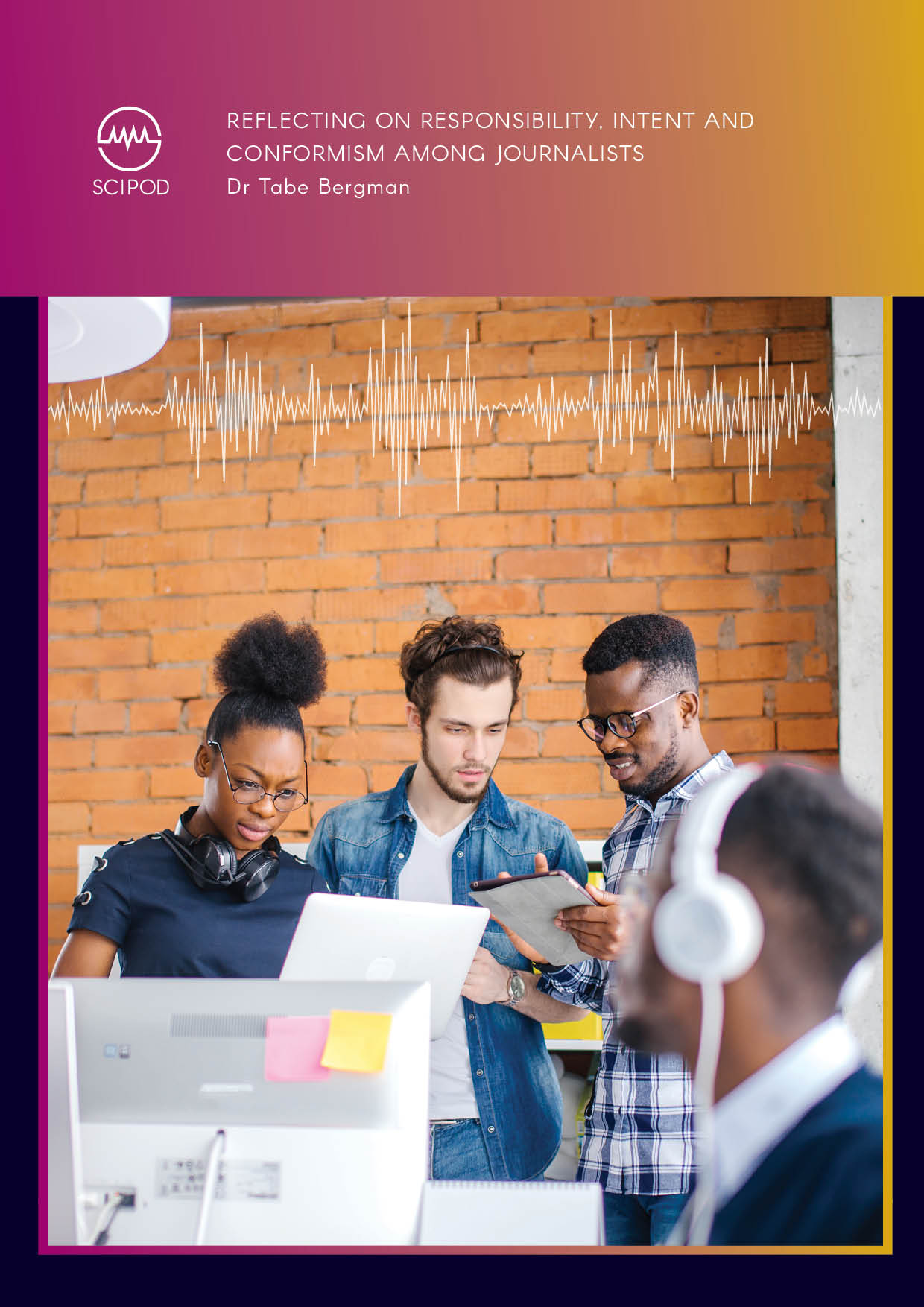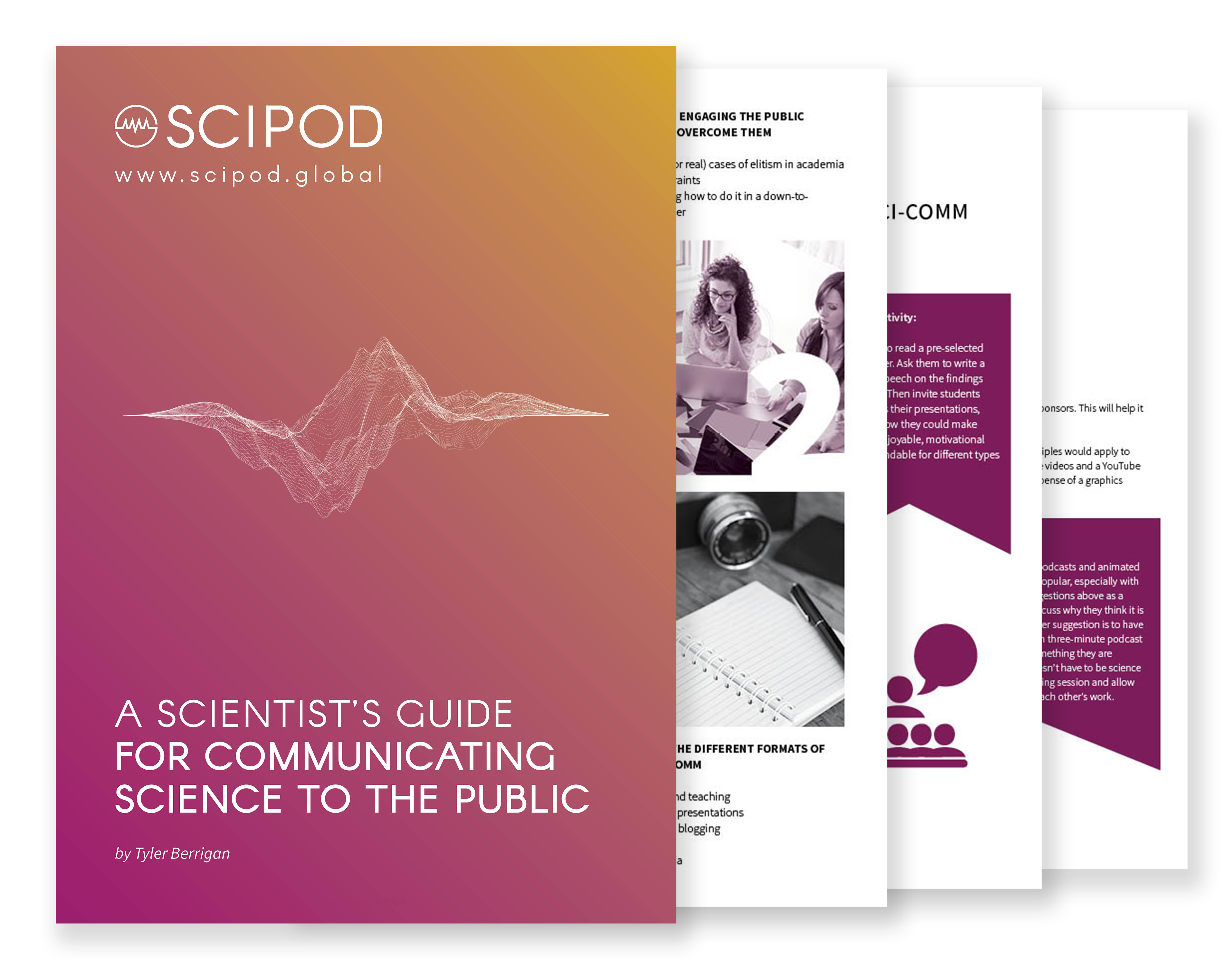Welcome to SciComm Radio
An exclusive interview series with leading scientists and science communicators
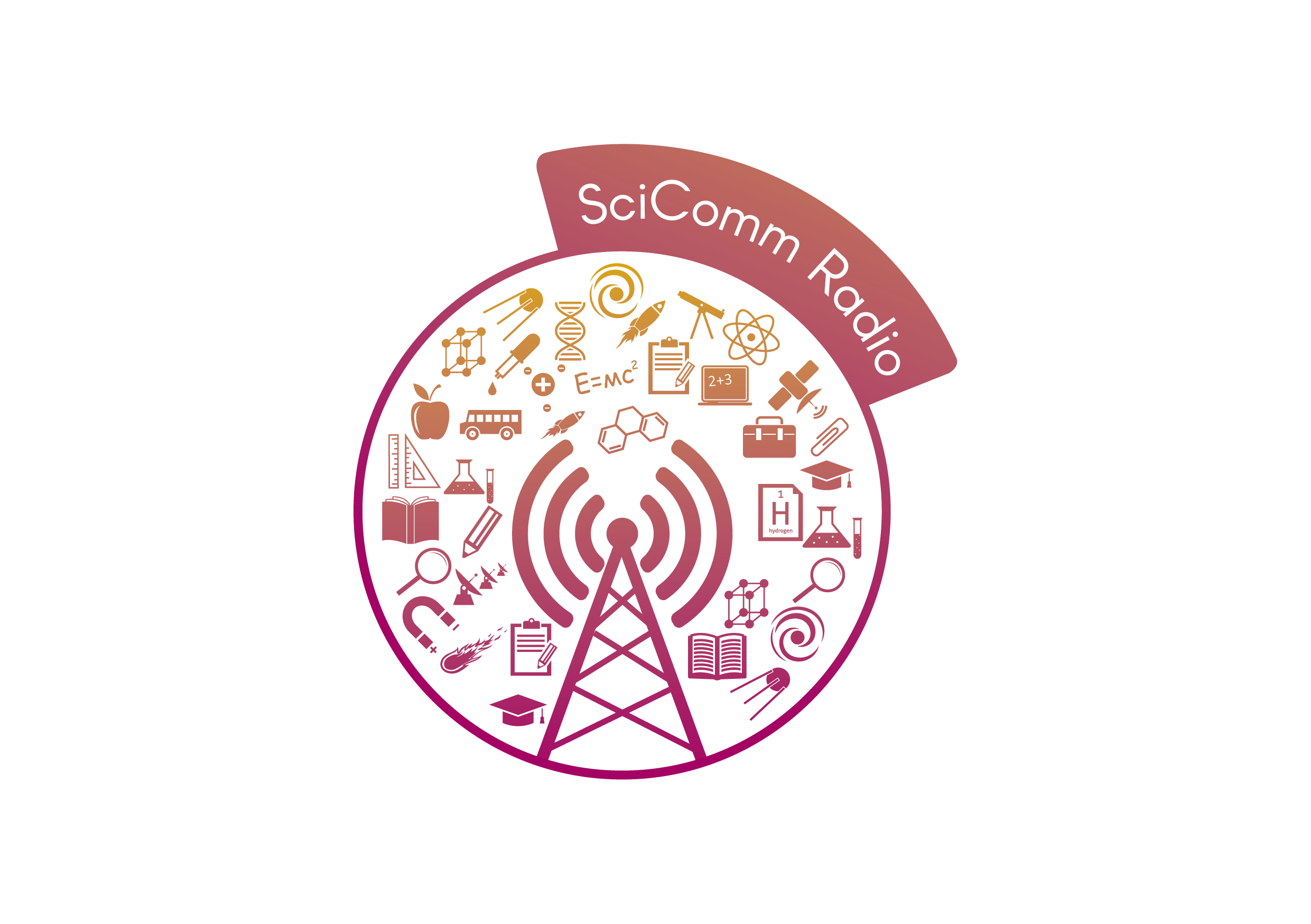
Click Below To Listen To A SciPod Radio Episode
Raymond Palmer | Improving Indoor Air Quality Lessens the Symptoms Associated with Chemical Intolerance
VideoPod
About this episode
Chemical intolerance is on the rise, currently afflicting around 20% of the American population. Common triggers include low-level exposure to indoor air contaminants such as combustion products from gas stoves and smoking, and indoor volatile organic compounds from products including disinfectants and air fresheners, as well as chemicals from paint and construction materials.
Original Article Reference
This video is a summary of ‘Does improving indoor air quality lessen symptoms associated with chemical intolerance?’ published in the journal Primary Health Care Research & Development. DOI: https://doi.org/10.1017/S1463423621000864

What does this mean?
Share: You can copy and redistribute the material in any medium or format
Adapt: You can change, and build upon the material for any purpose, even commercially.
Credit: You must give appropriate credit, provide a link to the license, and indicate if changes were made.
Increase the impact of your research!
More episodes
Eric Hinterman | Optimising Oxygen Production on Mars
VideoPod
About this episode
The first human mission to Mars may not be far away, but many preparations still need to be made to ensure the safety of crews once they arrive. One of the key requirements of these missions will be producing a steady supply of oxygen. This will allow crews to survive inside their habitats on the Martian surface, while also providing propellant for a Mars Ascent Vehicle, allowing them to return home.
Original Article Reference
This video is based on the paper ‘Multi-objective system optimization of a Mars atmospheric ISRU plant for oxygen production’ published in the 2021 IEEE Aerospace Conference (50100). doi.org/10.1109/AERO50100.2021.9438331

What does this mean?
Share: You can copy and redistribute the material in any medium or format
Adapt: You can change, and build upon the material for any purpose, even commercially.
Credit: You must give appropriate credit, provide a link to the license, and indicate if changes were made.
Increase the impact of your research!
More episodes
Professor Andrew R. Barron | Repurposing Plastic COVID Facemasks to Improve the Steel-Making Process
AudioPod
About this episode
Since the beginning of the COVID-19 pandemic, billions of plastic facemasks have been used and disposed of, with the majority destined for landfill. Professor Andrew R. Barron and his team at the Energy Safety Research Institute in Swansea, Wales, have developed an innovative method for repurposing these used facemasks. By transforming them into a powdered material that acts as a reducing agent, Professor Barron’s team aim to make the steel-making process more energy-efficient and sustainable.
Original Article Reference
This SciPod is a summary of the paper ‘Facemasks and ferrous metallurgy: improving gasification reactivity of low-volatile coals using waste COVID-19 facemasks for ironmaking application’, in Scientific Reports. doi.org/10.1038/s41598-022-06691-w
This work is licensed under a Creative Commons Attribution 4.0 International License. 
What does this mean?
Share: You can copy and redistribute the material in any medium or format
Adapt: You can change, and build upon the material for any purpose, even commercially.
Credit: You must give appropriate credit, provide a link to the license, and indicate if changes were made.
Increase the impact of your research!
More episodes
Dr Peter Melchior | SCARLET: Exploring the Universe in Unprecedented Detail
AudioPod
About this episode
Original Article Reference
This SciPod is a summary of the paper ‘SCARLET: Source separation in multi-band images by Constrained Matrix Factorization’, from Astronomy & Computing. doi.org/10.1016/j.ascom.2018.07.001
This work is licensed under a Creative Commons Attribution 4.0 International License. 
What does this mean?
Share: You can copy and redistribute the material in any medium or format
Adapt: You can change, and build upon the material for any purpose, even commercially.
Credit: You must give appropriate credit, provide a link to the license, and indicate if changes were made.
Increase the impact of your research!
More episodes
Dr Conrad Labandeira | Which Came First: Pollinating Insects or Flowers?
VideoPod
About this episode
Pollinating insects and plants have co-evolved throughout their history.
From about 125 million to 90 million years ago, cone-bearing plants were replaced by flowering plants as the dominant vegetation. This switch – the ‘Cretaceous Terrestrial Revolution’ – had profound effects on pollinating insects.
Dr Conrad Labandeira of the Smithsonian’s National Museum of Natural History wanted to answer a chicken-and-egg question: did insect pollination or flowers come first? To answer this question, his team examined insect fossils from before the Cretaceous Terrestrial Revolution.
Original Article Reference
This video is based on the paper ‘Life habits and evolutionary biology of new two-winged long-proboscid scorpionflies from mid-Cretaceous Myanmar amber, Nature Communications, 2019, 10, 1235.’ doi.org/10.1038/s41467-019-09236-4

What does this mean?
Share: You can copy and redistribute the material in any medium or format
Adapt: You can change, and build upon the material for any purpose, even commercially.
Credit: You must give appropriate credit, provide a link to the license, and indicate if changes were made.
Increase the impact of your research!
More episodes
Dr Susan Prichard | Adapting Forests to Wildfires in a Changing Climate
VideoPod
About this episode
Historically, controlled forest burning in western North America created a forest patchwork that limited the size and severity of wildfires. Over the last 200 years, however, fire suppression created large areas of dense tree stands. As droughts and temperatures increase due to climate change, these dense forests are now at increasing risk from extremely severe wildfires.
Original Article Reference
This video is based on the paper ‘Adapting western North American forests to climate change and wildfires: 10 common questions’ published in Ecological Applications. doi.org/10.1002/eap.2433

What does this mean?
Share: You can copy and redistribute the material in any medium or format
Adapt: You can change, and build upon the material for any purpose, even commercially.
Credit: You must give appropriate credit, provide a link to the license, and indicate if changes were made.
Increase the impact of your research!
More episodes
Dr Albert Rimola – Exploring the Surface Chemistry of Interstellar Dust
VideoPod
About this episode
Interstellar space may seem like the last place you would look when searching for the chemical origins of life. Yet on the surfaces of tiny dust grains within this vast expanse, complex chemical reactions are continually occurring, which likely played a key role in establishing the rich diversity of complex molecules we observe in the solar system today. In a new study, astrochemists in Spain and Italy, led by Albert Rimola at the Autonomous University of Barcelona, examine how advanced simulation techniques can be used to study these important processes on atomic scales.
Original Article Reference
This SciPod is a summary of the paper ‘Computational Surface Modelling of Ices and Minerals of Interstellar Interest—Insights and Perspectives’, from Minerals, MDPI. https://doi.org/10.3390/min11010026

What does this mean?
Share: You can copy and redistribute the material in any medium or format
Adapt: You can change, and build upon the material for any purpose, even commercially.
Credit: You must give appropriate credit, provide a link to the license, and indicate if changes were made.
Increase the impact of your research!
More episodes
Dr Jennifer Botha – Analysing Bones to Gain Insight into Mammalian Evolution
AudioPod
About this episode
Original Article Reference
This SciPod is a summary of the paper ‘Osteohistology of Late Triassic prozostrodontian cynodonts from Brazil’, from PeerJ. https://doi.org/10.7717/peerj.5029
This work is licensed under a Creative Commons Attribution 4.0 International License. 
What does this mean?
Share: You can copy and redistribute the material in any medium or format
Adapt: You can change, and build upon the material for any purpose, even commercially.
Credit: You must give appropriate credit, provide a link to the license, and indicate if changes were made.
Increase the impact of your research!
More episodes
Dr Dirk Lachenmeier | Avoiding Injury from Hot Food by Determining the Threshold Contact Temperature
Dr Dirk Lachenmeier | Avoiding Injury from Hot Food by Determining the Threshold Contact Temperature
Original Article Reference
This SciPod is a summary of the paper ‘Injury Threshold of Oral Contact with Hot Foods and Method for Its Sensory Evaluation’ published in the journal Safety. DOI: https://doi.org/10.3390/safety4030038
About this episode
Consuming very hot food and beverages poses a risk of oesophageal cancer. Although injury thresholds have been specified in industry standards and guidelines, there remain practical limitations in obtaining an exact measurement of the contact temperature from hot foodstuff in the oral mucosa inside the mouth. Dr Dirk Lachenmeier, a chemist and toxicologist at the Chemical and Veterinary Investigation Agency Karlsruhe, worked in collaboration with his father Dr Walter Lachenmeier, a retired engineer, to develop a new method to estimate the safe surface or consumption temperature of hot food. This has allowed them to make important recommendations.
This work is licensed under a Creative Commons Attribution 4.0 International License. 
What does this mean?
Share: You can copy and redistribute the material in any medium or format
Adapt: You can change, and build upon the material for any purpose, even commercially.
Credit: You must give appropriate credit, provide a link to the license, and indicate if changes were made.
More episodes
Increase the impact of your research
• Good science communication helps people make informed decisions and motivates them to take appropriate and affirmative action.
• Good science communication encourages everyday people to be scientifically literate so that they can analyse the integrity and legitimacy of information.
• Good science communication encourages people into STEM-related fields of study and employment.
• Good public science communication fosters a community around research that includes both members of the public, policymakers and scientists.
• In a recent survey, 75% of people suggested they would prefer to listen to an interesting story than read it.

Step 1 Upload your science paper
Step 2 SciPod script written
Step 3 Voice audio recorded
Step 4 SciPod published
Dr Brett Lidbury | Rethinking Myalgic Encephalomyelitis/Chronic Fatigue Syndrome Using Machine Learning
Dr Brett Lidbury | Rethinking Myalgic Encephalomyelitis/Chronic Fatigue Syndrome Using Machine Learning
Original Article Reference
This SciPod is a summary of the paper ‘Rethinking ME/CFS Diagnostic Reference Intervals via Machine Learning, and the Utility of Activin B for Defining Symptom Severity’, from the journal Diagnostics. DOI: https://doi.org/10.3390/diagnostics9030079
About this episode
This work is licensed under a Creative Commons Attribution 4.0 International License. 
What does this mean?
Share: You can copy and redistribute the material in any medium or format
Adapt: You can change, and build upon the material for any purpose, even commercially.
Credit: You must give appropriate credit, provide a link to the license, and indicate if changes were made.
More episodes
Increase the impact of your research
• Good science communication helps people make informed decisions and motivates them to take appropriate and affirmative action.
• Good science communication encourages everyday people to be scientifically literate so that they can analyse the integrity and legitimacy of information.
• Good science communication encourages people into STEM-related fields of study and employment.
• Good public science communication fosters a community around research that includes both members of the public, policymakers and scientists.
• In a recent survey, 75% of people suggested they would prefer to listen to an interesting story than read it.

Step 1 Upload your science paper
Step 2 SciPod script written
Step 3 Voice audio recorded
Step 4 SciPod published
Dr Zsuzsanna Balogh-Brunstad | Getting to the Root of Plant-Fungi Symbiosis
Dr Zsuzsanna Balogh-Brunstad | Getting to the Root of Plant-Fungi Symbiosis
Original Article Reference
This SciPod is a summary of the paper ‘Ectomycorrhizal Fungi and Mineral Interactions in the Rhizosphere of Scots and Red Pine Seedlings’, in Soils. doi.org/10.3390/soils1010005
About this episode
An ancient relationship between plants and fungi could help us improve forestry and agriculture, while also responding to the challenges posed by climate change. These beneficial fungi, along with their bacteria helpers, help plants to grow bigger and healthier, and survive droughts. An international team of researchers has been investigating how these fungi and bacteria increase mineral availability for Scots pine and red pine seedlings through mineral weathering.
This work is licensed under a Creative Commons Attribution 4.0 International License. 
What does this mean?
Share: You can copy and redistribute the material in any medium or format
Adapt: You can change, and build upon the material for any purpose, even commercially.
Credit: You must give appropriate credit, provide a link to the license, and indicate if changes were made.
More episodes
Increase the impact of your research
• Good science communication helps people make informed decisions and motivates them to take appropriate and affirmative action.
• Good science communication encourages everyday people to be scientifically literate so that they can analyse the integrity and legitimacy of information.
• Good science communication encourages people into STEM-related fields of study and employment.
• Good public science communication fosters a community around research that includes both members of the public, policymakers and scientists.
• In a recent survey, 75% of people suggested they would prefer to listen to an interesting story than read it.

Step 1 Upload your science paper
Step 2 SciPod script written
Step 3 Voice audio recorded
Step 4 SciPod published
Professor John Cayley | Grammalepsy: The Art of Language as Culture Goes Digital
Professor John Cayley | Grammalepsy: The Art of Language as Culture Goes Digital
Original Article Reference
This SciPod is a summary of the chapter ‘At the End of Literature’, from the book Grammalepsy: Essays on Digital Language Art. doi.org/10.7273/hk5k-2350
About this episode
The term literature refers to a wide and diverse range of work, including novels, poems, plays, and essays. While literary experts agree that all literature is composed of language, they often argue about which texts can or should be considered as a part of the literature that we value. In recent years, technological advances have led to the creation of innovative works that merge language with digital media, state-of-the-art technologies and computation itself. In a fascinating book called Grammalepsy, Professor John Cayley of Brown University introduces a new theory of aesthetic linguistic practice that could shed new light on digital literature or, more comprehensively, language art.
This work is licensed under a Creative Commons Attribution 4.0 International License. 
What does this mean?
Share: You can copy and redistribute the material in any medium or format
Adapt: You can change, and build upon the material for any purpose, even commercially.
Credit: You must give appropriate credit, provide a link to the license, and indicate if changes were made.
More episodes
Increase the impact of your research
• Good science communication helps people make informed decisions and motivates them to take appropriate and affirmative action.
• Good science communication encourages everyday people to be scientifically literate so that they can analyse the integrity and legitimacy of information.
• Good science communication encourages people into STEM-related fields of study and employment.
• Good public science communication fosters a community around research that includes both members of the public, policymakers and scientists.
• In a recent survey, 75% of people suggested they would prefer to listen to an interesting story than read it.

Step 1 Upload your science paper
Step 2 SciPod script written
Step 3 Voice audio recorded
Step 4 SciPod published
Dr Michael Schutz | Musical Alarms: Improving Medical Environments by Studying Sound
Dr Michael Schutz | Musical Alarms: Improving Medical Environments by Studying Sound
About this episode
Medical devices in hospitals use auditory interfaces to keep doctors and nurses updated while keeping their eyes focused on patients. These auditory alarms are crucial for complex procedures, such as placing a breathing tube. Unfortunately, the specific sounds used in current systems are highly problematic. The lack of sophistication in these tones render them annoying and distracting, harming communication amongst medical staff and posing risks for patient care. An FDA survey has revealed hundreds of deaths annually resulting from poorly designed alarms! Although there are many ways to improve their use, one solution has received little attention thus far – improving the quality of the sounds themselves.
More episodes
This work is licensed under a Creative Commons Attribution 4.0 International License. 
What does this mean?
Share: You can copy and redistribute the material in any medium or format
Adapt: You can change, and build upon the material for any purpose, even commercially.
Credit: You must give appropriate credit, provide a link to the license, and indicate if changes were made.
Increase the impact of your research
• Good science communication helps people make informed decisions and motivates them to take appropriate and affirmative action.
• Good science communication encourages everyday people to be scientifically literate so that they can analyse the integrity and legitimacy of information.
• Good science communication encourages people into STEM-related fields of study and employment.
• Good public science communication fosters a community around research that includes both members of the public, policymakers and scientists.
• In a recent survey, 75% of people suggested they would prefer to listen to an interesting story than read it.

Step 1 Upload your science paper
Step 2 SciPod script written
Step 3 Voice audio recorded
Step 4 SciPod published
Associate Professor Glen Searle | Exploring How Sydney’s Population Growth Impacts Its Governance
Associate Professor Glen Searle | Exploring How Sydney’s Population Growth Impacts Its Governance
Original Article Reference
This SciPod is a summary of the paper ‘Population growth and development: an outcome of Sydney’s metropolitan governance’, from Australian Planner, 2020. doi.org/10.1080/07293682.2020.1739095
About this episode
Rises in population and demographic changes can have significant effects on the development and governance of urban environments. Associate Professor Glen Searle of the University of Sydney recently published a paper that highlights the ways in which Sydney’s rapid population growth is supported by national immigration targets and the state government’s desire to keep Sydney ahead of other Australian cities as a global city. This population growth then drives important governance decisions at state and national levels, particularly relating to development. By prioritising rapid dwelling construction to accommodate Sydney’s rising population, but lacking adequate funding for new transport, the state government has had to reduce checks and balances needed for more democratic planning and sustainable development.
This work is licensed under a Creative Commons Attribution 4.0 International License. 
What does this mean?
Share: You can copy and redistribute the material in any medium or format
Adapt: You can change, and build upon the material for any purpose, even commercially.
Credit: You must give appropriate credit, provide a link to the license, and indicate if changes were made.
More episodes
Increase the impact of your research
• Good science communication helps people make informed decisions and motivates them to take appropriate and affirmative action.
• Good science communication encourages everyday people to be scientifically literate so that they can analyse the integrity and legitimacy of information.
• Good science communication encourages people into STEM-related fields of study and employment.
• Good public science communication fosters a community around research that includes both members of the public, policymakers and scientists.
• In a recent survey, 75% of people suggested they would prefer to listen to an interesting story than read it.

Step 1 Upload your science paper
Step 2 SciPod script written
Step 3 Voice audio recorded
Step 4 SciPod published
Dr. Marzia Cremona – Using Functional Data Analysis to Better Understand COVID-19 Mortality
Dr. Marzia Cremona – Using Functional Data Analysis to Better Understand COVID-19 Mortality
Original Article Reference
This SciPod is a summary of the paper ‘Functional data analysis characterizes the shapes of the first COVID-19 epidemic wave in Italy’, published in Scientific Reports. DOI: https://doi.org/10.1038/s41598-021-95866-y
About this episode
Italy was the first European country to experience a major outbreak of COVID-19. Across the country, intriguingly different patterns of mortality were seen across regions. Dr. Marzia Cremona from Université Laval, in collaboration with a global team of researchers from the Pennsylvania State University and the Sant’Anna School of Advanced Studies, used novel statistical tools from the field of functional data analysis (FDA) to identify several important factors contributing to these differences. This work has critical implications for policymaking and also demonstrates the useful application of FDA techniques to epidemiological research.
This work is licensed under a Creative Commons Attribution 4.0 International License. 
What does this mean?
Share: You can copy and redistribute the material in any medium or format
Adapt: You can change, and build upon the material for any purpose, even commercially.
Credit: You must give appropriate credit, provide a link to the license, and indicate if changes were made.
More episodes
Increase the impact of your research
• Good science communication helps people make informed decisions and motivates them to take appropriate and affirmative action.
• Good science communication encourages everyday people to be scientifically literate so that they can analyse the integrity and legitimacy of information.
• Good science communication encourages people into STEM-related fields of study and employment.
• Good public science communication fosters a community around research that includes both members of the public, policymakers and scientists.
• In a recent survey, 75% of people suggested they would prefer to listen to an interesting story than read it.

Step 1 Upload your science paper
Step 2 SciPod script written
Step 3 Voice audio recorded
Step 4 SciPod published
Webinar: Get Your Research Heard: Equipment and Technology
Webinar: Get Your Research Heard: Podcast Show Format
Webinar: Get Your Research Heard: How Often Should I Release A New Episode
Webinar: Get Your Research Heard: How Long Should a Podcast Episode be
Webinar: Get Your Research Heard: Naming Your Podcast and Episodes
Webinar: Get Your Research Heard: Plan Your Podcast
Webinar: Get Your Research Heard: How To Get Listeners
Webinar: Improving Science Communication And Impact: How To Get Your Research Heard
Ebook: What is a SciPod?
Dr Surjani Wonorahardjo – Dr Suharti Suharti – Dr I Wayan Dasna | Exploring the Ethics and Environmental Impact of Chemistry
Dr Surjani Wonorahardjo – Dr Suharti Suharti – Dr I Wayan Dasna | Exploring the Ethics and Environmental Impact of Chemistry
Original Article Reference
This SciPod is a summary of the paper ‘From Chemistry Back to Nature, an Ethical Perception of Chemists’, from The 4th International Conference on Mathematics and Science Education (ICoMSE). https://doi.org/10.1063/5.0043206
About this episode
From its early days, the field of chemistry has been exploring nature at the molecular level. As such, chemistry is also used to explore natural resources and possible ways of exploiting them. As Earth’s environment is now rapidly deteriorating, chemists need to adapt their practices with the aim of contributing to its protection. Dr Surjani Wonorahardjo, Dr Suharti Suharti and Dr I Wayan Dasna, three researchers in Indonesia, have recently conducted a study exploring the ethical and environmental issues associated with current chemistry practices, in the hope to inspire reflection and positive change in the field.
This work is licensed under a Creative Commons Attribution 4.0 International License. 
What does this mean?
Share: You can copy and redistribute the material in any medium or format
Adapt: You can change, and build upon the material for any purpose, even commercially.
Credit: You must give appropriate credit, provide a link to the license, and indicate if changes were made.
More episodes
Increase the impact of your research
• Good science communication helps people make informed decisions and motivates them to take appropriate and affirmative action.
• Good science communication encourages everyday people to be scientifically literate so that they can analyse the integrity and legitimacy of information.
• Good science communication encourages people into STEM-related fields of study and employment.
• Good public science communication fosters a community around research that includes both members of the public, policymakers and scientists.
• In a recent survey, 75% of people suggested they would prefer to listen to an interesting story than read it.

Step 1 Upload your science paper
Step 2 SciPod script written
Step 3 Voice audio recorded
Step 4 SciPod published
Dr Laura Tipton | Symbiotic Science through a Shared Language
Dr Laura Tipton | Symbiotic Science through a Shared Language
Original Article Reference
This SciPod is a summary of the paper ‘A Developing Symbiosis: Enabling Cross-Talk Between Ecologists and Microbiome Scientists’, in Frontiers in Microbiology. doi.org/10.3389/fmicb.2019.00292
About this episode
Many scientific concepts are applicable to multiple disciplines and across spatial scales, from the microscopic to the global. As such, scientists from different disciplines must communicate effectively – through a shared scientific language – for effective collaboration and scientific advancement. With this aim, Dr Laura Tipton of Chaminade University and her colleagues from the University of Hawai’i investigate the history of ecological terminology, in order to work towards building a common lexicon that bridges ecology and microbiome science.
This work is licensed under a Creative Commons Attribution 4.0 International License. 
What does this mean?
Share: You can copy and redistribute the material in any medium or format
Adapt: You can change, and build upon the material for any purpose, even commercially.
Credit: You must give appropriate credit, provide a link to the license, and indicate if changes were made.
More episodes
Increase the impact of your research
• Good science communication helps people make informed decisions and motivates them to take appropriate and affirmative action.
• Good science communication encourages everyday people to be scientifically literate so that they can analyse the integrity and legitimacy of information.
• Good science communication encourages people into STEM-related fields of study and employment.
• Good public science communication fosters a community around research that includes both members of the public, policymakers and scientists.
• In a recent survey, 75% of people suggested they would prefer to listen to an interesting story than read it.

Step 1 Upload your science paper
Step 2 SciPod script written
Step 3 Voice audio recorded
Step 4 SciPod published
Dr Gabrielle Gold-von Simson | The Biomedical Entrepreneurship Skills Development Program (BEEP): Educating a New Generation of Medical Innovators
Dr Gabrielle Gold-von Simson | The Biomedical Entrepreneurship Skills Development Program (BEEP): Educating a New Generation of Medical Innovators
Original Article Reference
This SciPod is a summary of https://doi.org/10.33548/SCIENTIA815
About this episode
Innovative, new technologies are rapidly being introduced into the medical world, as scientists and inventors continually discover solutions to all kinds of health issues. However, comprehensive education in medical product development, business process and strategy is distinctly lacking for science students who aspire to become commercial medical innovators and entrepreneurs. Entrepreneurially minded professionals at the New York University Grossman School of Medicine developed, implemented, and integrated programs to train early scientists in the business side of science to accelerate the pace of commercialisation and encourage individuals to pursue venture creation and entrepreneurship to impact highly relevant healthcare solutions.
This work is licensed under a Creative Commons Attribution 4.0 International License. 
What does this mean?
Share: You can copy and redistribute the material in any medium or format
Adapt: You can change, and build upon the material for any purpose, even commercially.
Credit: You must give appropriate credit, provide a link to the license, and indicate if changes were made.
More episodes
Increase the impact of your research
• Good science communication helps people make informed decisions and motivates them to take appropriate and affirmative action.
• Good science communication encourages everyday people to be scientifically literate so that they can analyse the integrity and legitimacy of information.
• Good science communication encourages people into STEM-related fields of study and employment.
• Good public science communication fosters a community around research that includes both members of the public, policymakers and scientists.
• In a recent survey, 75% of people suggested they would prefer to listen to an interesting story than read it.

Step 1 Upload your science paper
Step 2 SciPod script written
Step 3 Voice audio recorded
Step 4 SciPod published
Dr Pal Bela Szecsi | Changes in Maternal Vitamin D Levels Throughout Pregnancy and Across the Seasons
Dr Pal Bela Szecsi | Changes in Maternal Vitamin D Levels Throughout Pregnancy and Across the Seasons
Original Article Reference
This SciPod is a summary of the paper ‘Variation in plasma 25-hydroxyvitamin D2 and D3 in normal pregnancy with gestational age, sampling season, and complications: A longitudinal cohort study’ from PLOS One. DOI: https://doi.org/10.1371/journal.pone.0231657
About this episode
Maternal nutrition plays a major role in reducing pregnancy complications and improving infant and child health. Vitamin D is important during pregnancy as it helps the baby’s heart, bones, teeth and nervous system develop properly. Low levels of vitamin D in pregnancy have been linked to a number of problems and conditions. Dr Pal Bela Szecsi and his team at Copenhagen University Hospital in Denmark have been investigating vitamin D concentrations throughout normal pregnancy and in relation to possible complications.
This work is licensed under a Creative Commons Attribution 4.0 International License. 
What does this mean?
Share: You can copy and redistribute the material in any medium or format
Adapt: You can change, and build upon the material for any purpose, even commercially.
Credit: You must give appropriate credit, provide a link to the license, and indicate if changes were made.
More episodes
Increase the impact of your research
• Good science communication helps people make informed decisions and motivates them to take appropriate and affirmative action.
• Good science communication encourages everyday people to be scientifically literate so that they can analyse the integrity and legitimacy of information.
• Good science communication encourages people into STEM-related fields of study and employment.
• Good public science communication fosters a community around research that includes both members of the public, policymakers and scientists.
• In a recent survey, 75% of people suggested they would prefer to listen to an interesting story than read it.

Step 1 Upload your science paper
Step 2 SciPod script written
Step 3 Voice audio recorded
Step 4 SciPod published
Dr Helen Greenwood Hansma | Energy: A Clue to the Origins of Life
Dr Helen Greenwood Hansma | Energy: A Clue to the Origins of Life
Original Article Reference
This SciPod is a summary of the paper ‘Mechanical Energy before Chemical Energy at the Origins of Life?’, in Sci. https://doi.org/10.3390/sci2040088 & https://doi.org/10.1016/j.bpj.2022.08.032
About this episode
Energy is vital for life. It allows important functions to occur in living systems, from the molecular level to the scale of the whole organism. Dr Helen Greenwood Hansma, from the University of California in Santa Barbara, believes that the types of energy used in living cells can provide clues to help us understand the origins of life. In her recent research, she explores how mechanical energy could have driven the processes that gave rise to early life in the absence of chemical energy.
This work is licensed under a Creative Commons Attribution 4.0 International License. 
What does this mean?
Share: You can copy and redistribute the material in any medium or format
Adapt: You can change, and build upon the material for any purpose, even commercially.
Credit: You must give appropriate credit, provide a link to the license, and indicate if changes were made.
More episodes
Increase the impact of your research
• Good science communication helps people make informed decisions and motivates them to take appropriate and affirmative action.
• Good science communication encourages everyday people to be scientifically literate so that they can analyse the integrity and legitimacy of information.
• Good science communication encourages people into STEM-related fields of study and employment.
• Good public science communication fosters a community around research that includes both members of the public, policymakers and scientists.
• In a recent survey, 75% of people suggested they would prefer to listen to an interesting story than read it.

Step 1 Upload your science paper
Step 2 SciPod script written
Step 3 Voice audio recorded
Step 4 SciPod published
Dr Tabe Bergman – Reflecting on Responsibility, Intent and Conformism Among Journalists
Dr Tabe Bergman – Reflecting on Responsibility, Intent and Conformism Among Journalists
Original Article Reference
This SciPod is a summary of the paper ‘Manufacturing foreign news from afar: views from an editor’s desk’, from the Journal of Applied Journalism & Media Studies. https://doi.org/10.1386/ajms_00078_1
About this episode
Herman and Chomsky’s propaganda model is among the most renowned academic contributions to the study of journalism. Although it offers valuable insight into news content and how the media industry operates, it mostly ignores an important step in the production of news: what happens in the newsroom. Dr Tabe Bergman, an Assistant Professor at Xi’an Jiaotong-Liverpool University and Deputy Head of the University’s Media and Communication department, recently assessed practices in the newsroom, with the aim to supplement the propaganda model.
This work is licensed under a Creative Commons Attribution 4.0 International License. 
What does this mean?
Share: You can copy and redistribute the material in any medium or format
Adapt: You can change, and build upon the material for any purpose, even commercially.
Credit: You must give appropriate credit, provide a link to the license, and indicate if changes were made.
More episodes
Increase the impact of your research
• Good science communication helps people make informed decisions and motivates them to take appropriate and affirmative action.
• Good science communication encourages everyday people to be scientifically literate so that they can analyse the integrity and legitimacy of information.
• Good science communication encourages people into STEM-related fields of study and employment.
• Good public science communication fosters a community around research that includes both members of the public, policymakers and scientists.
• In a recent survey, 75% of people suggested they would prefer to listen to an interesting story than read it.

Step 1 Upload your science paper
Step 2 SciPod script written
Step 3 Voice audio recorded
Step 4 SciPod published


